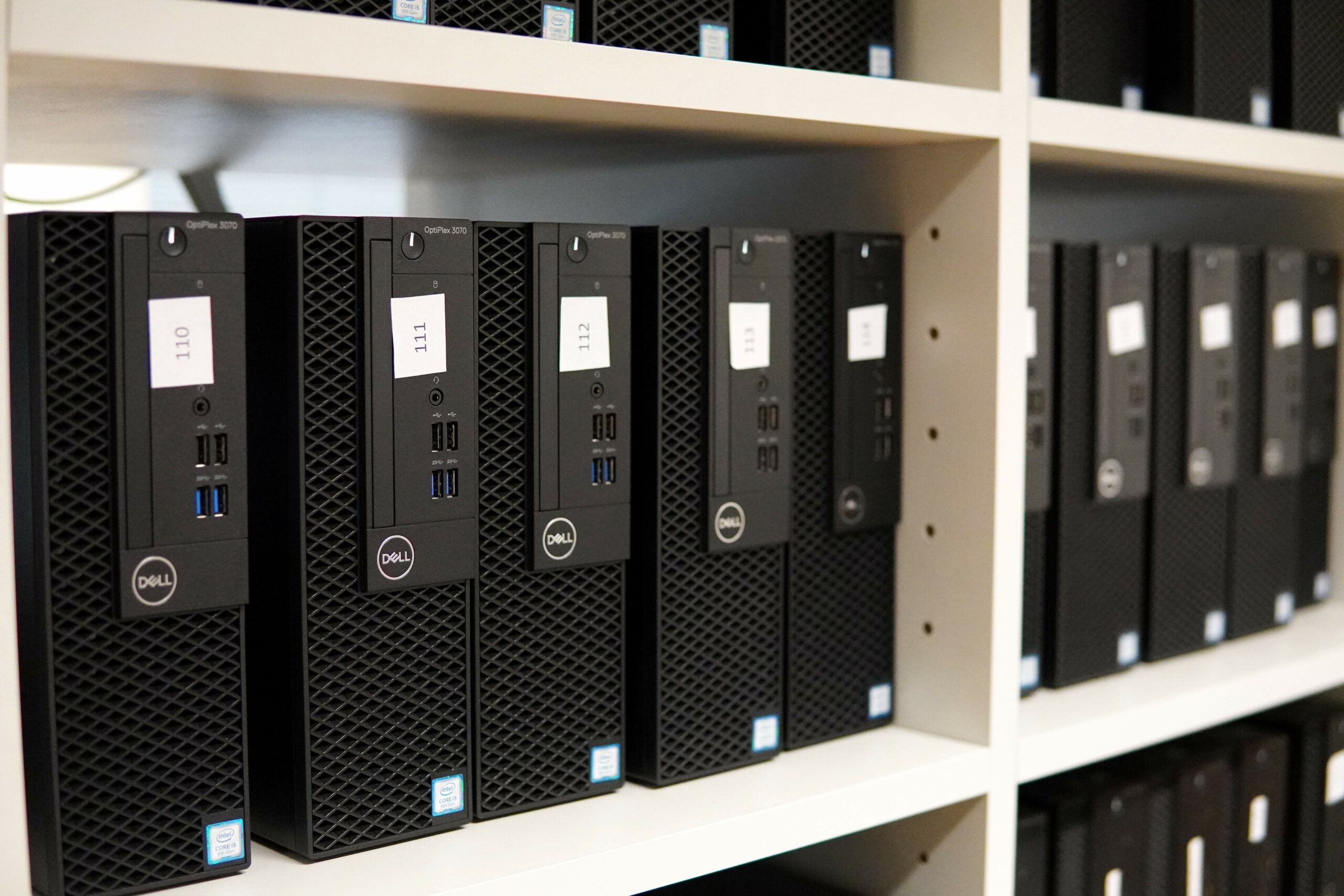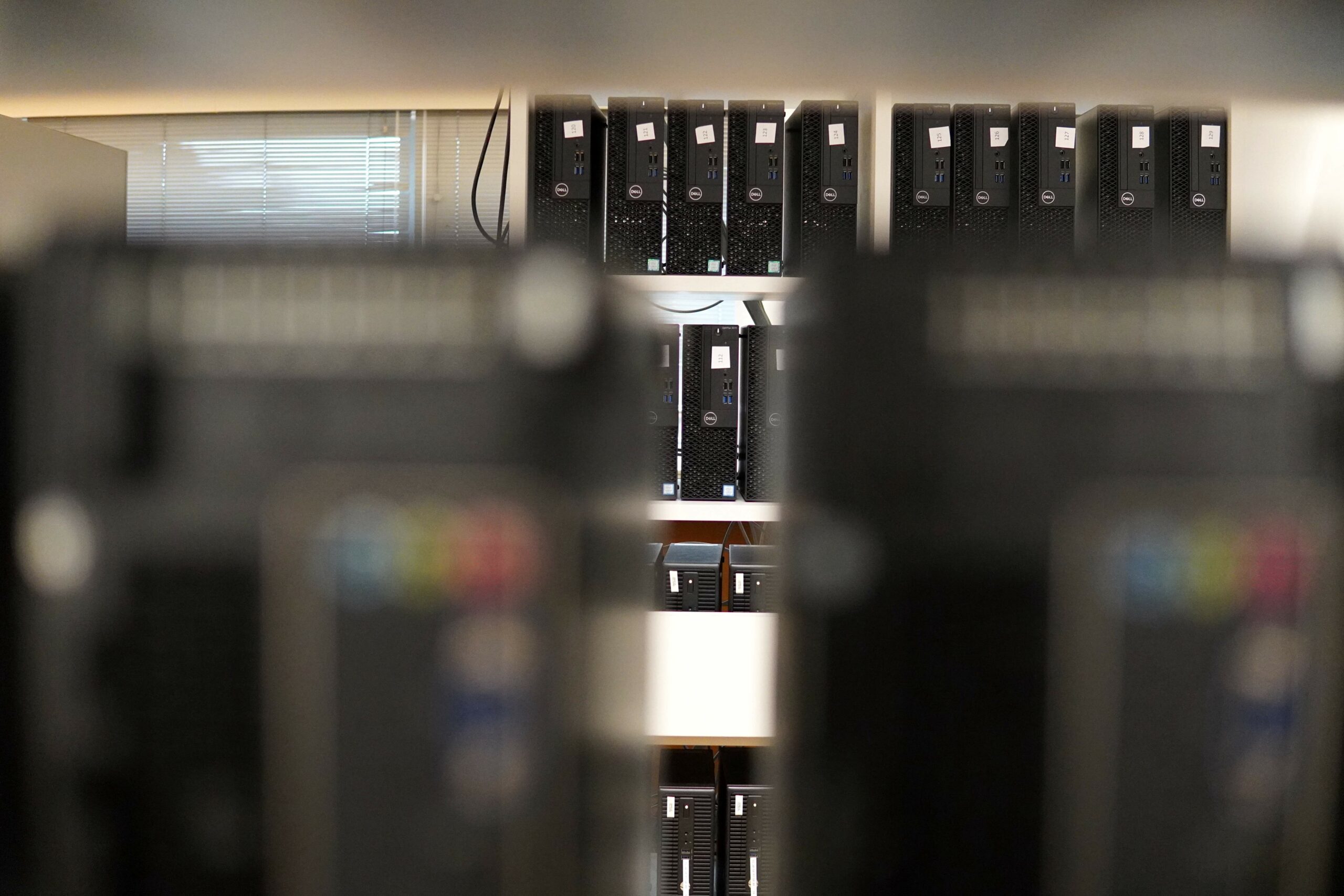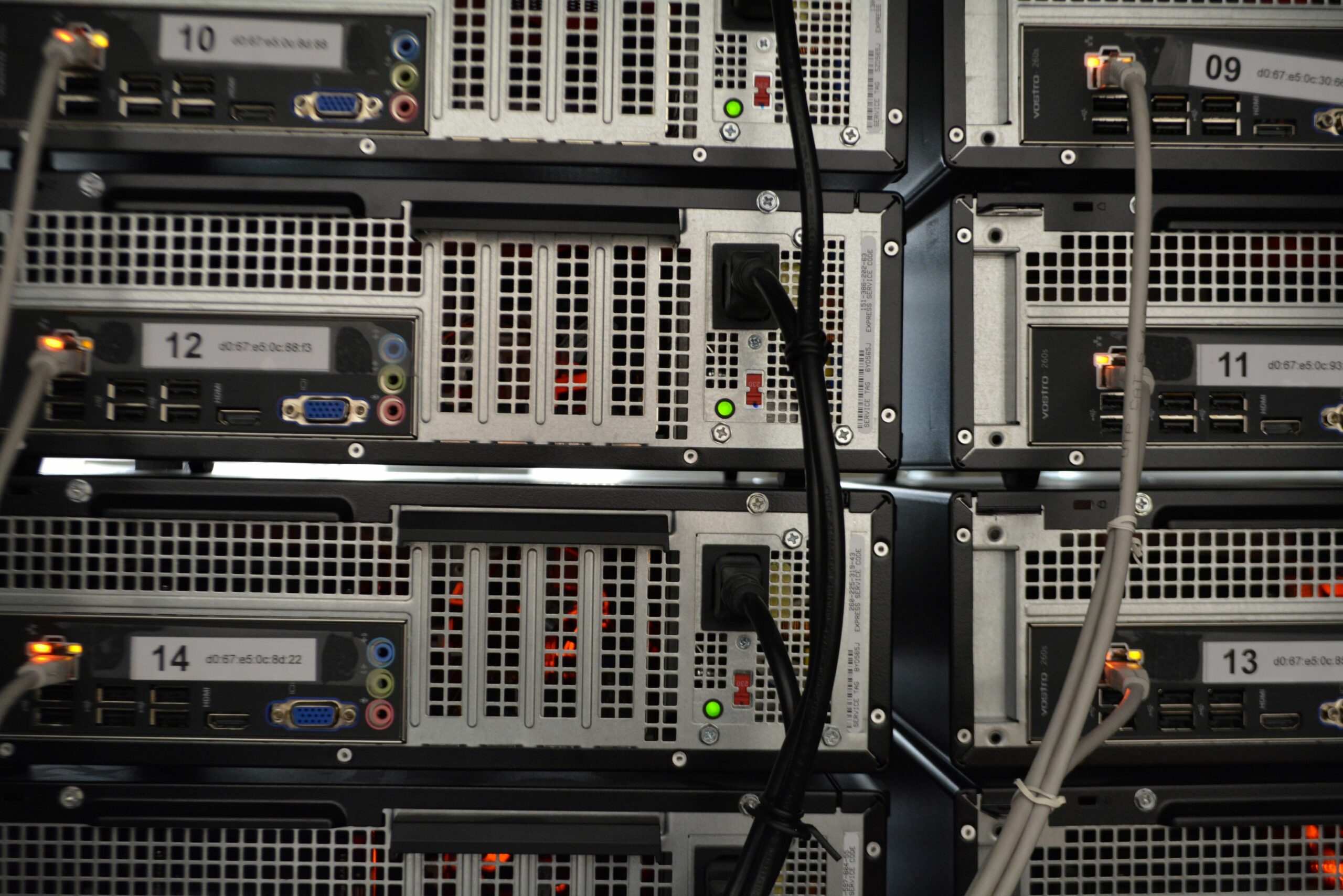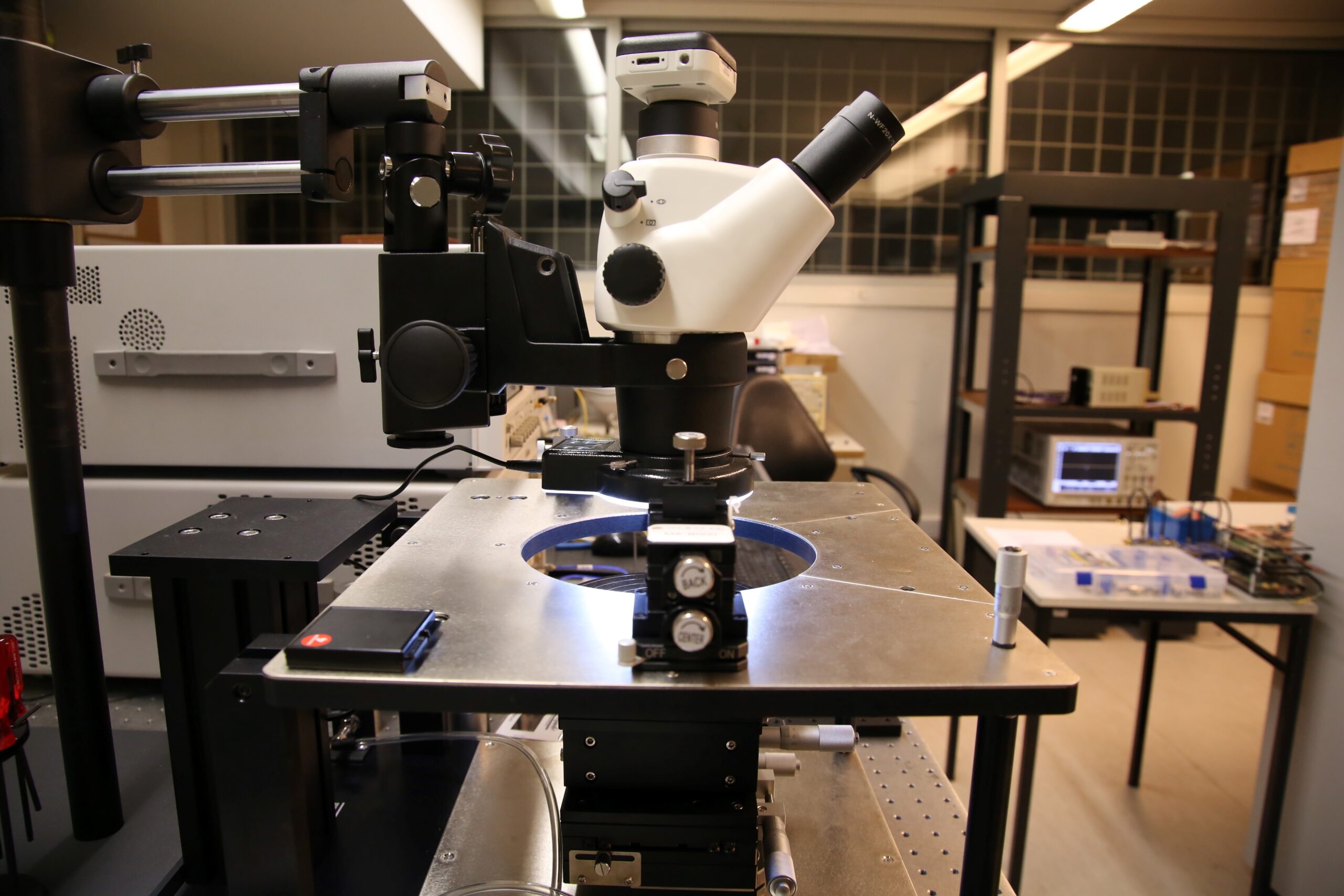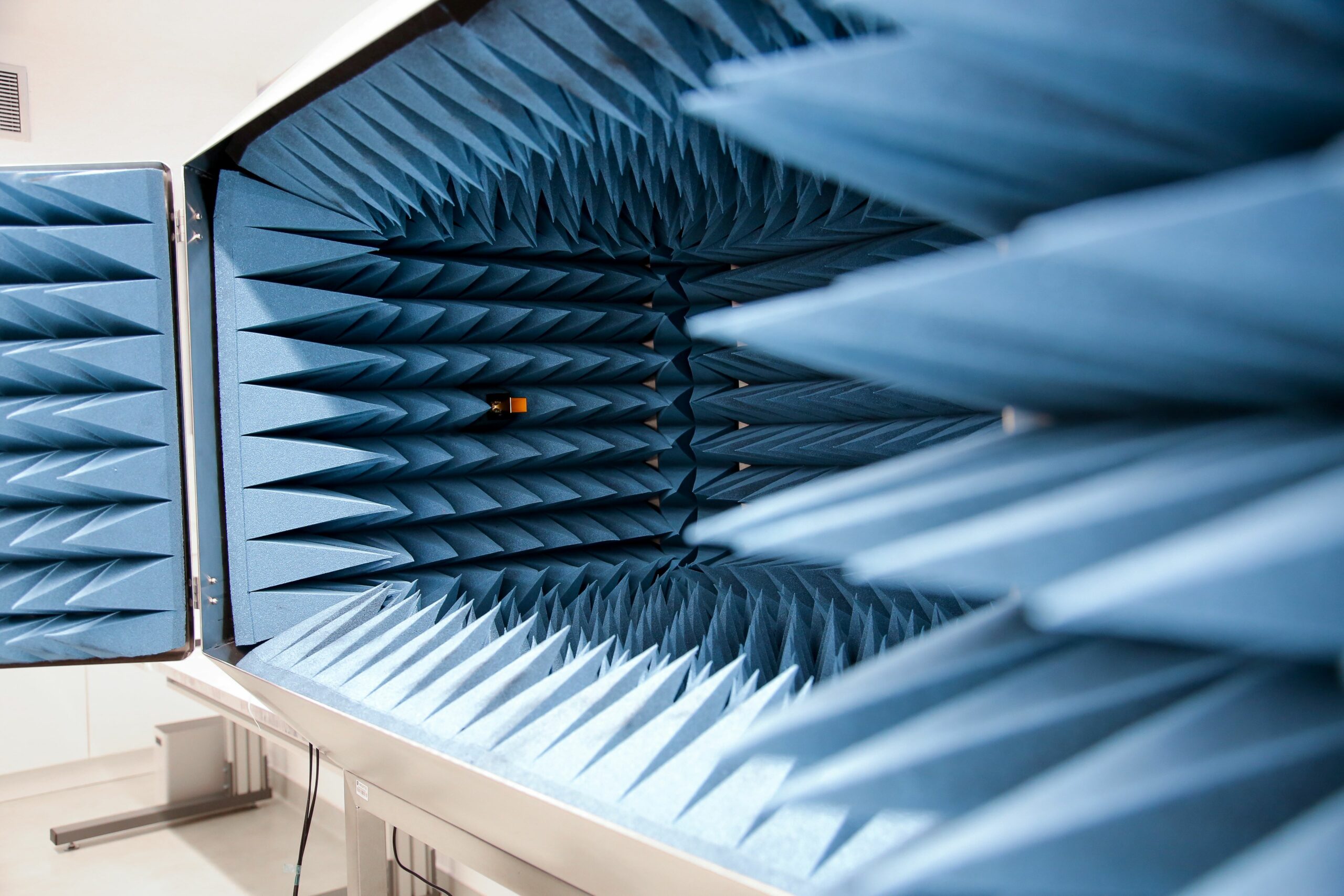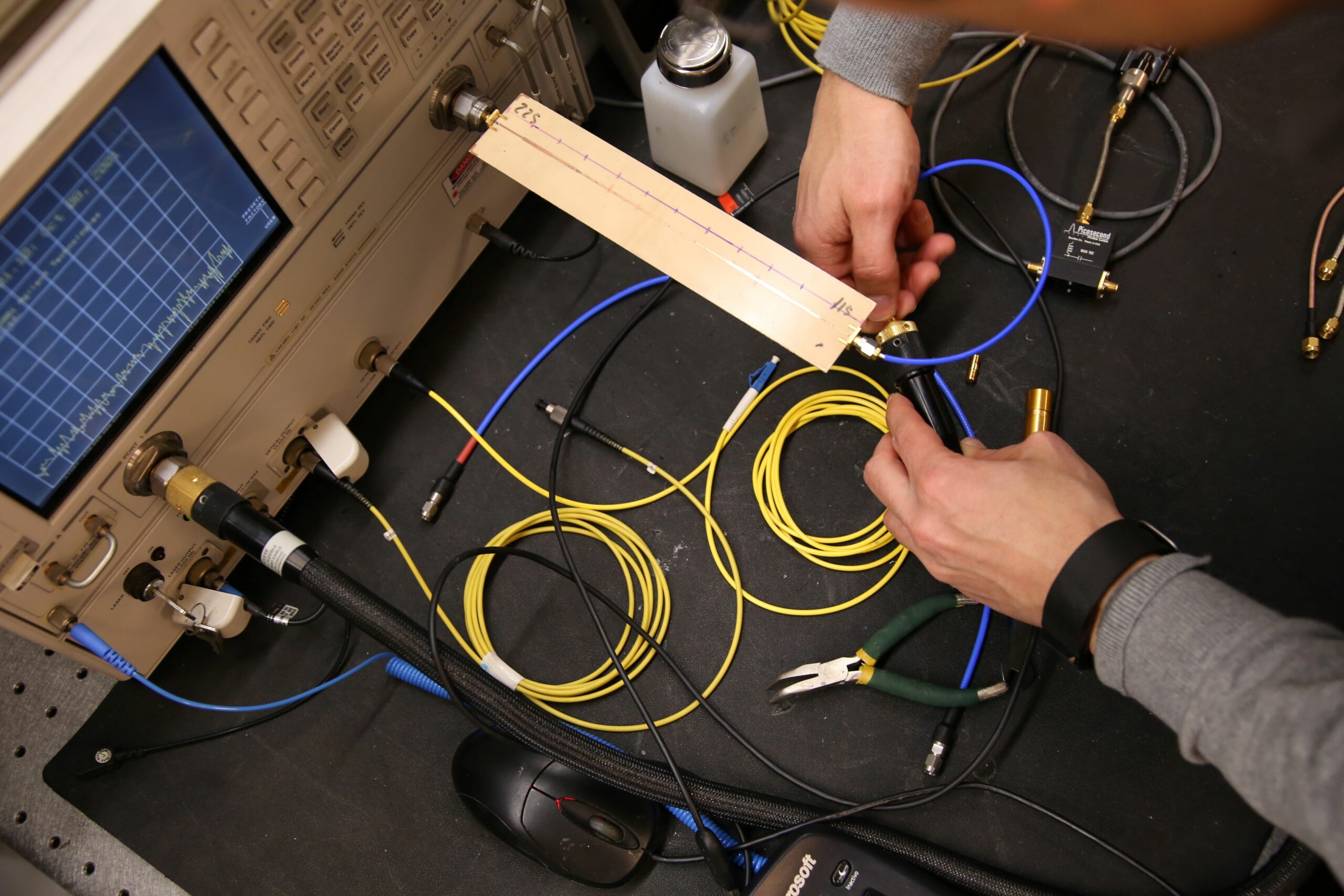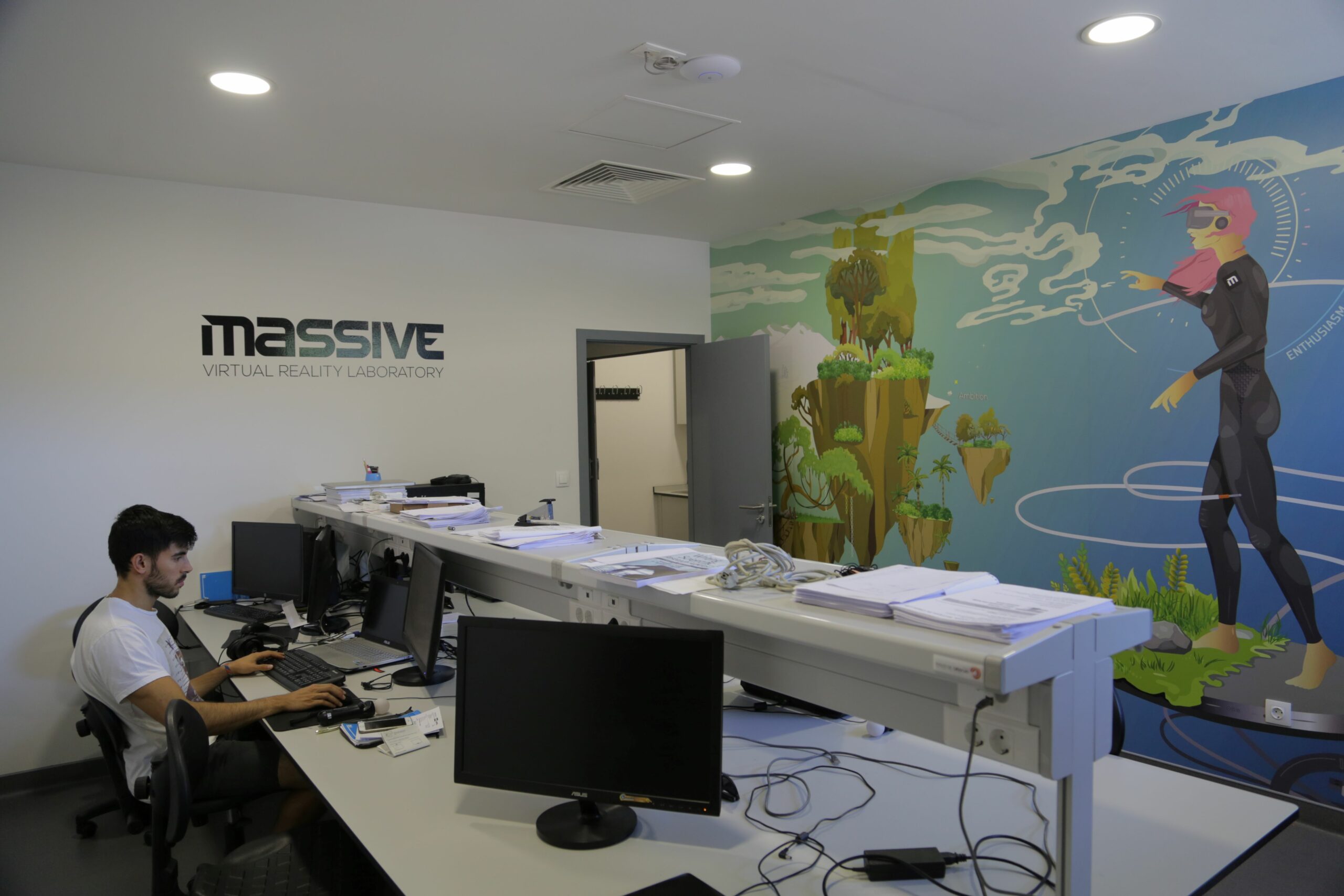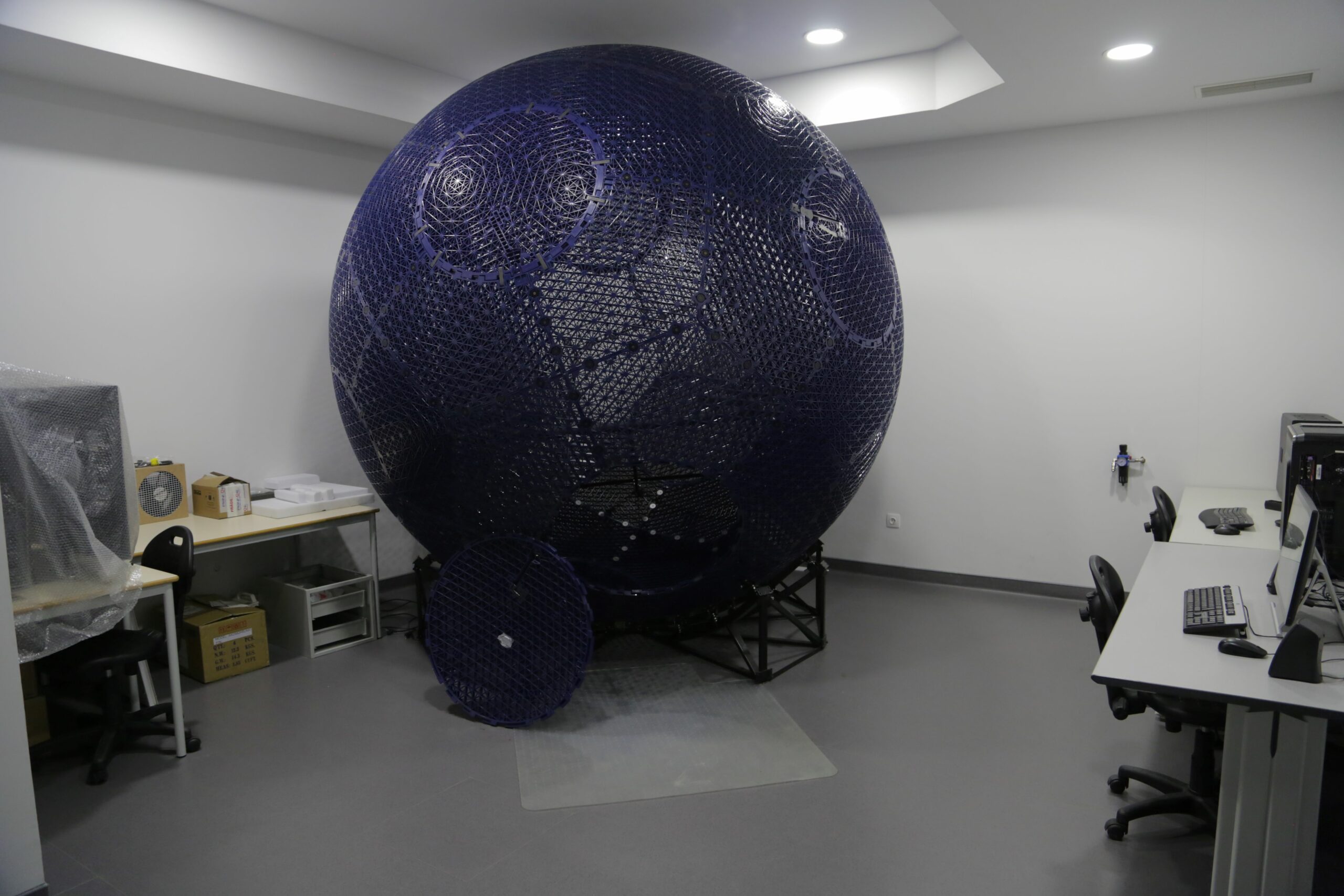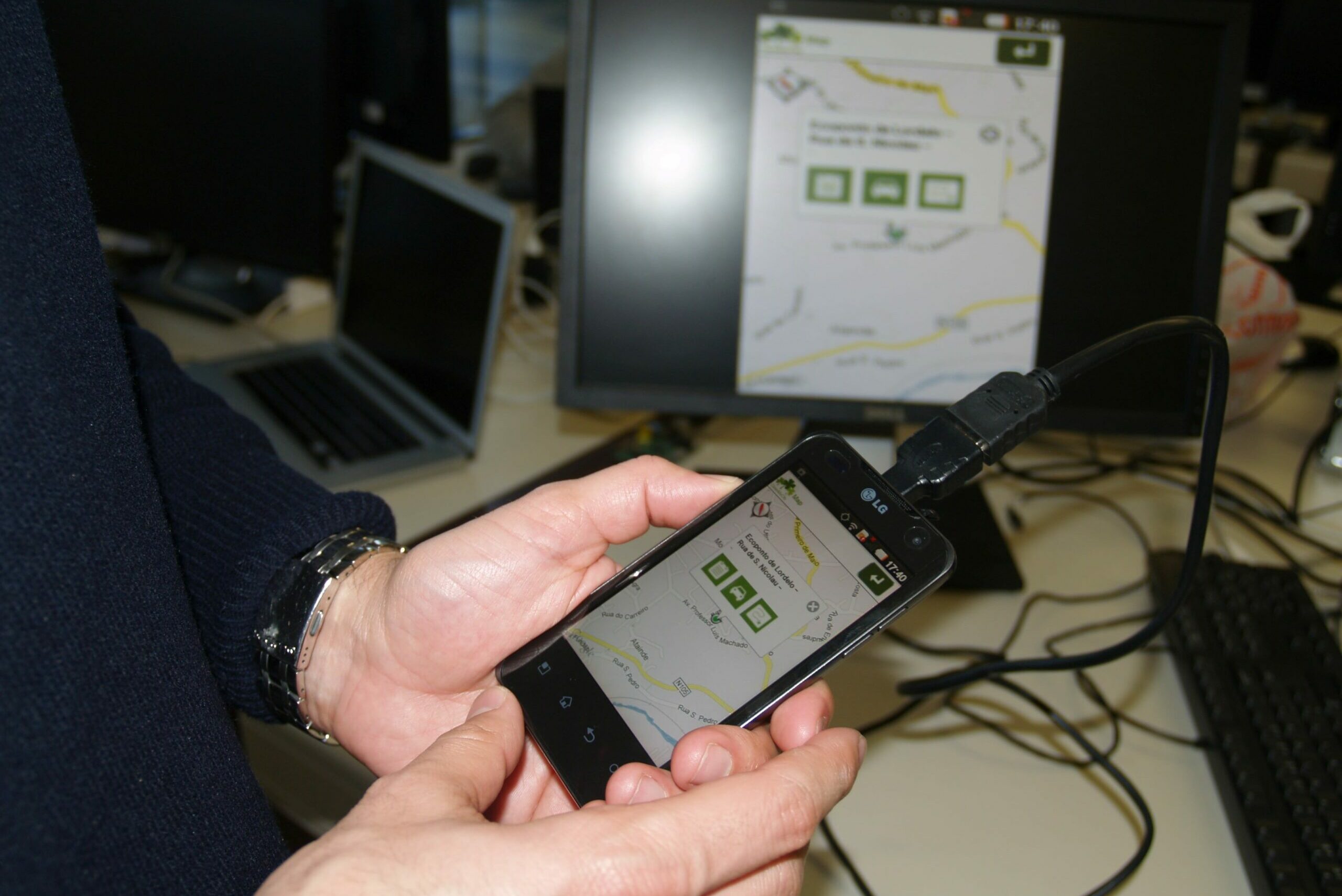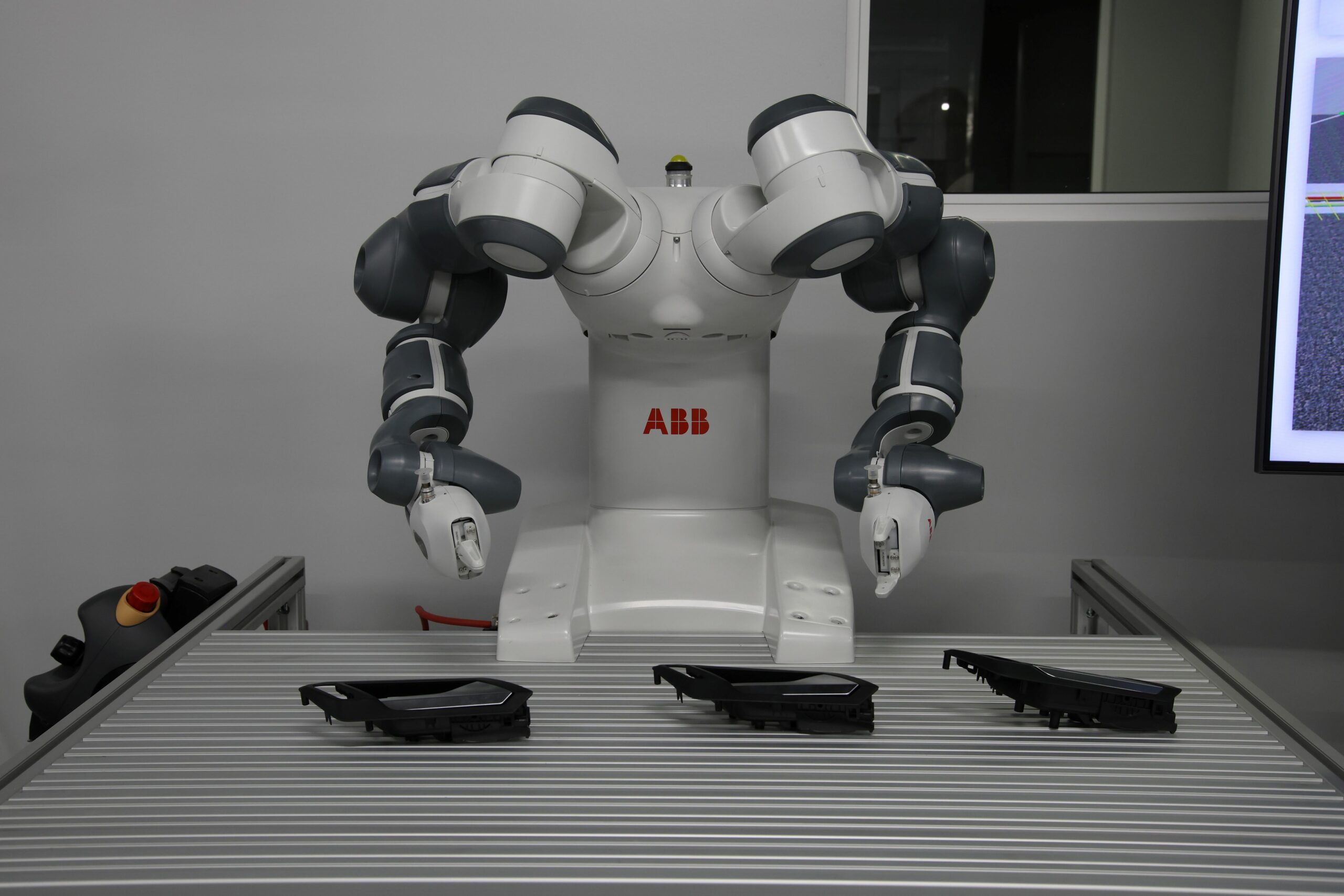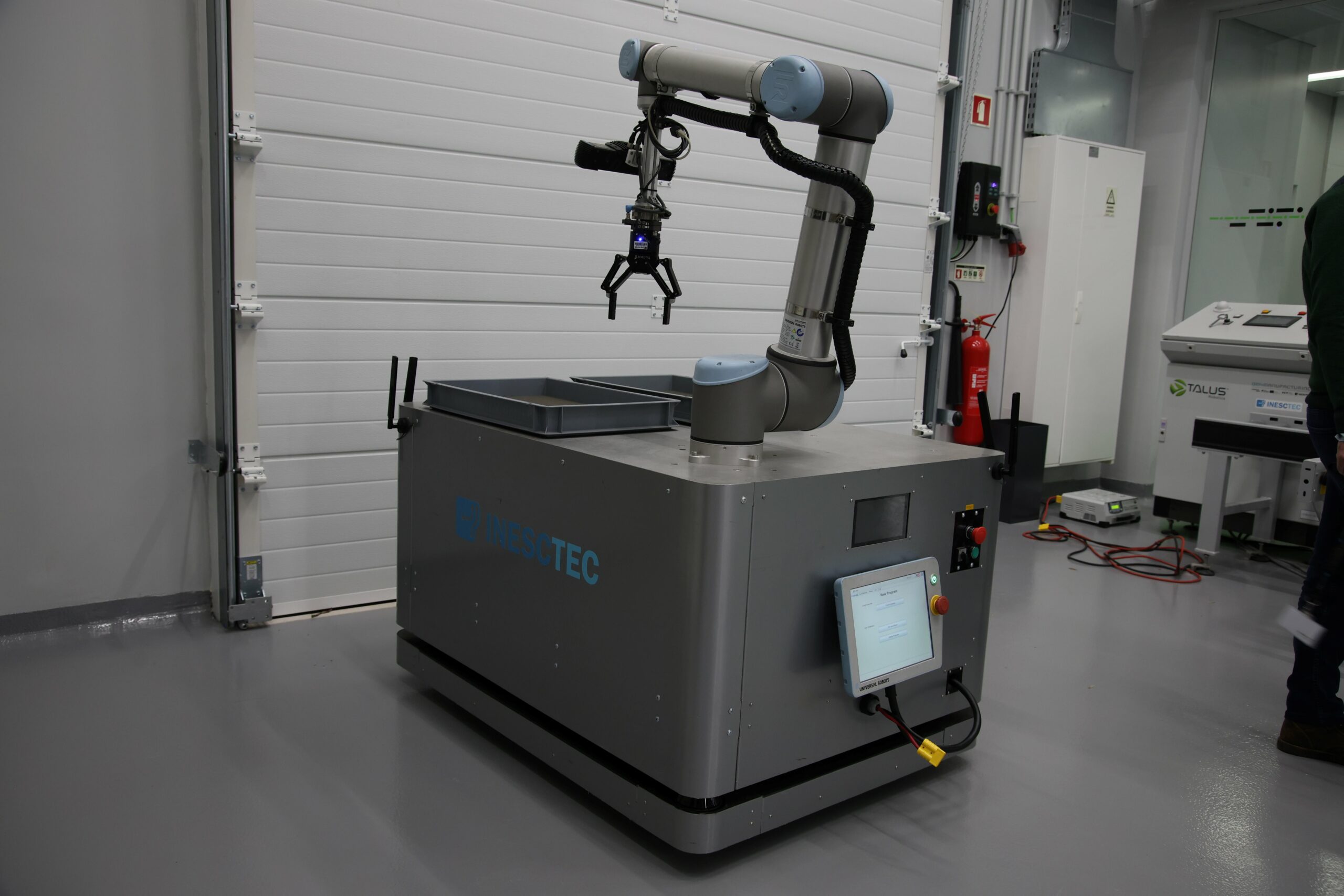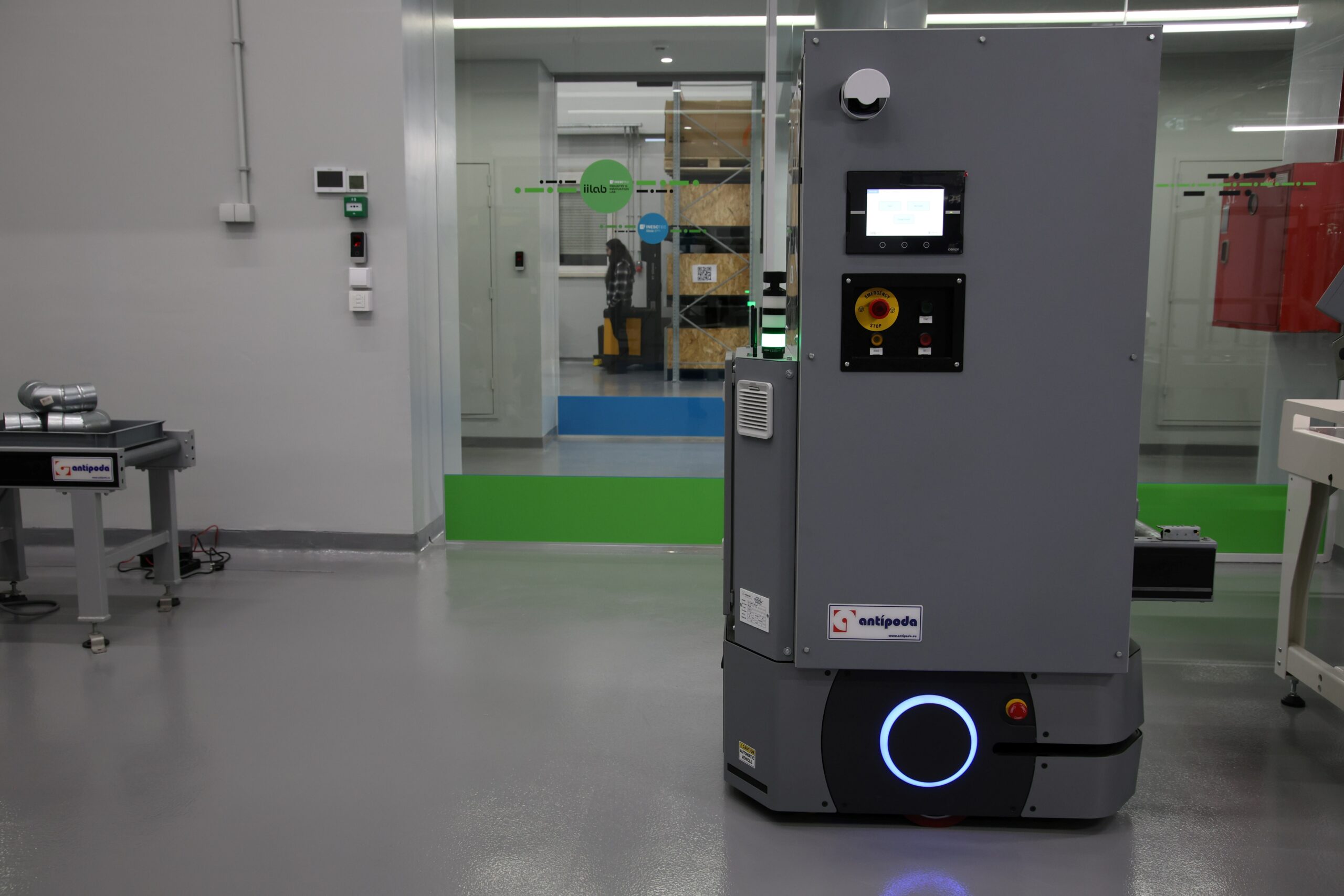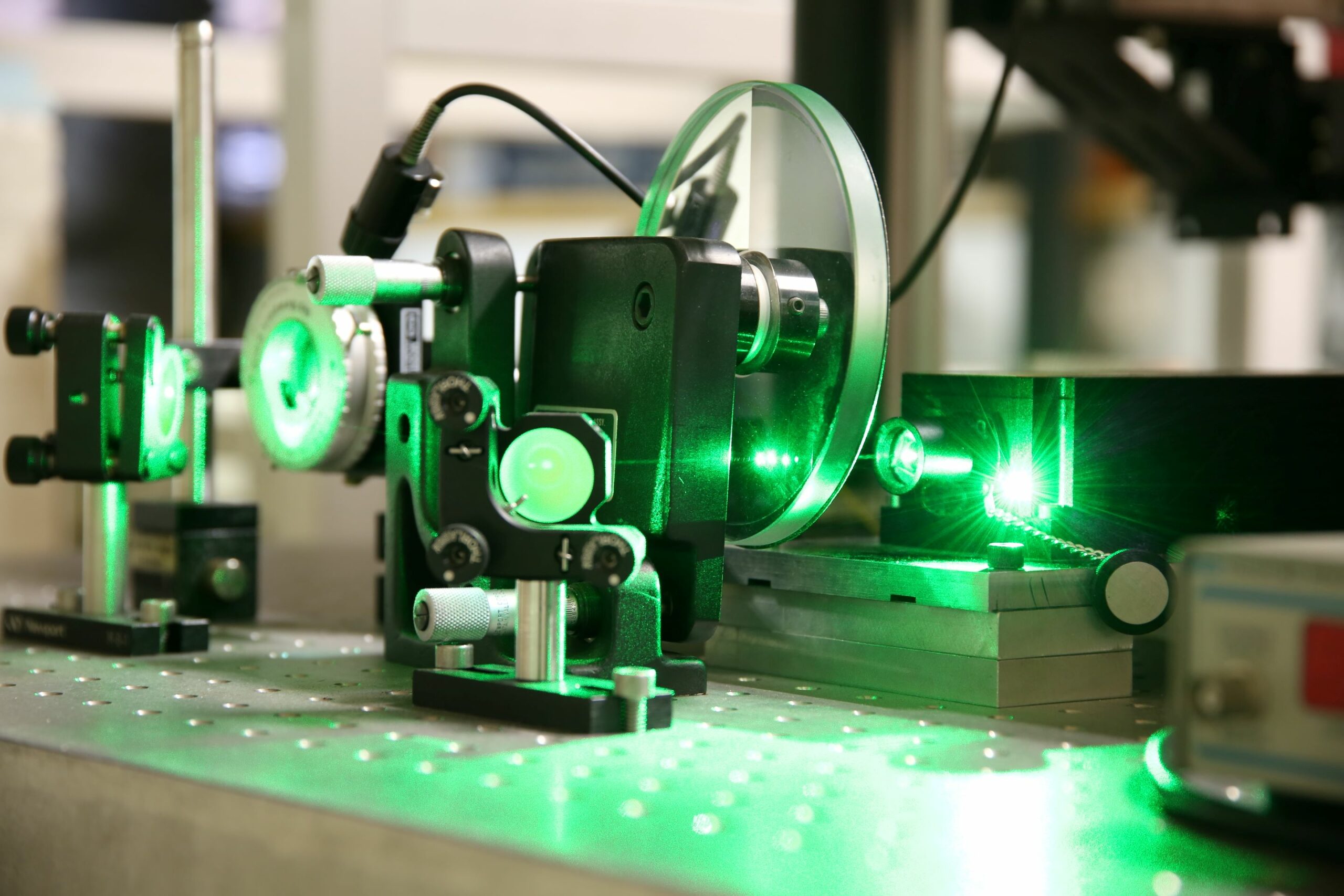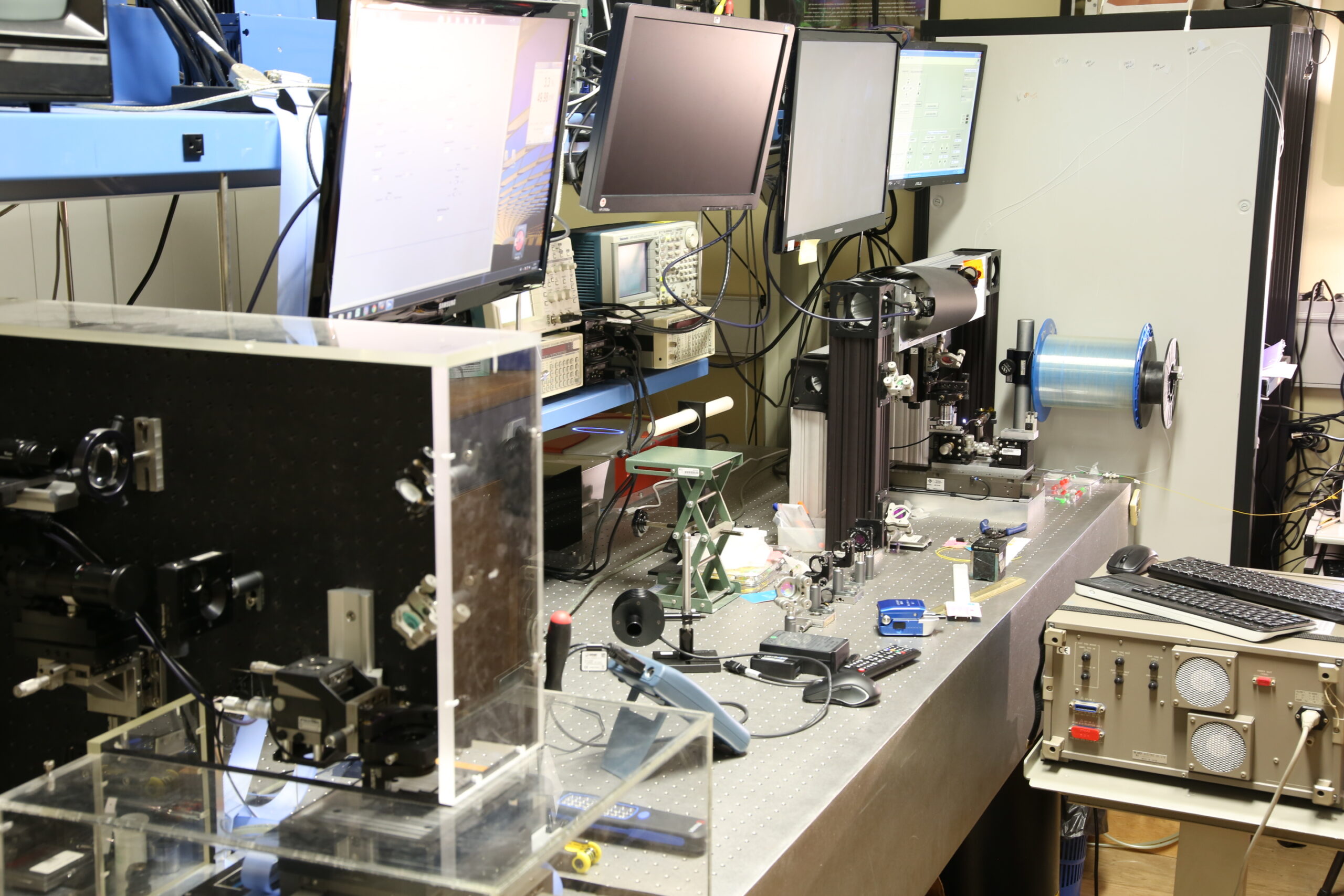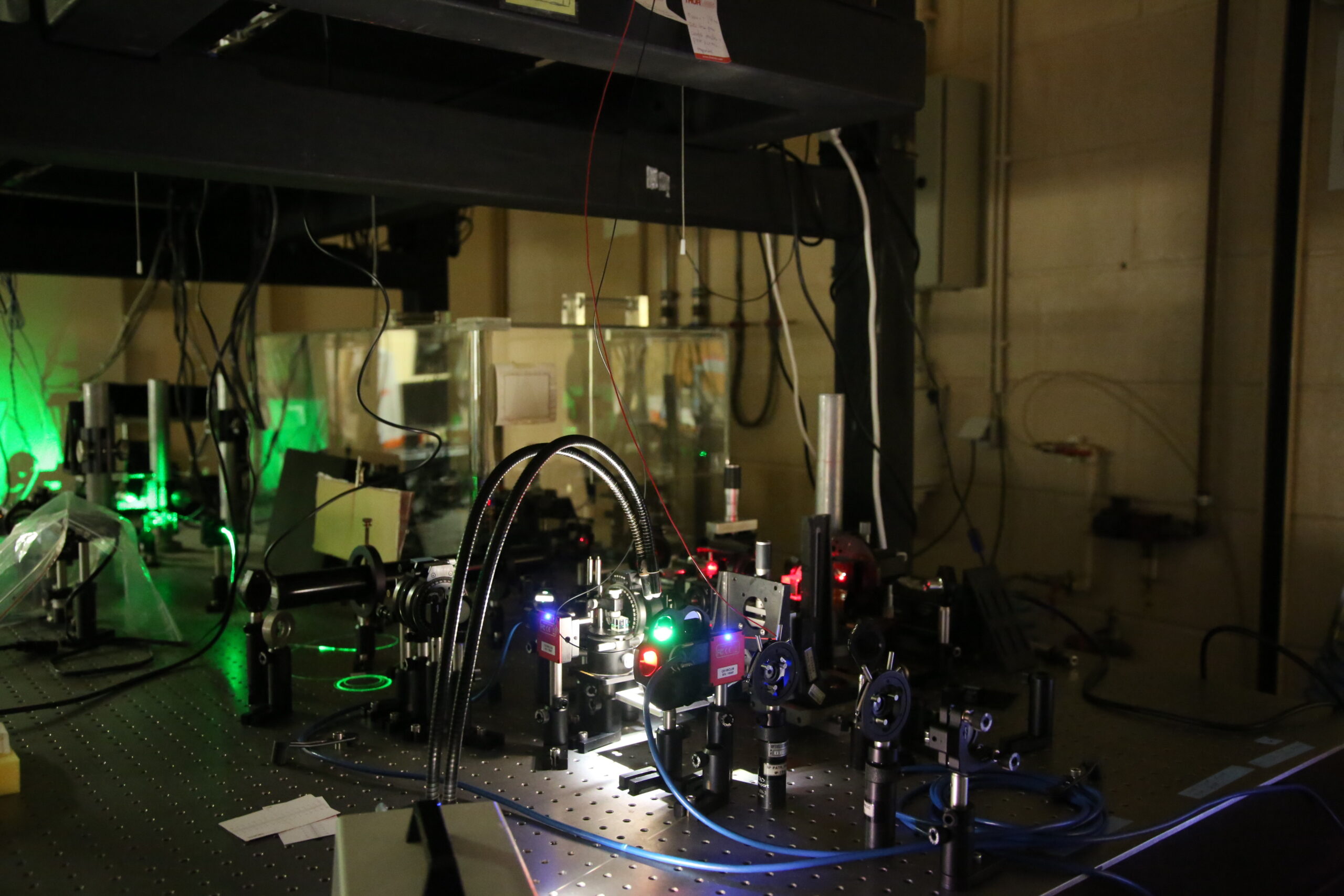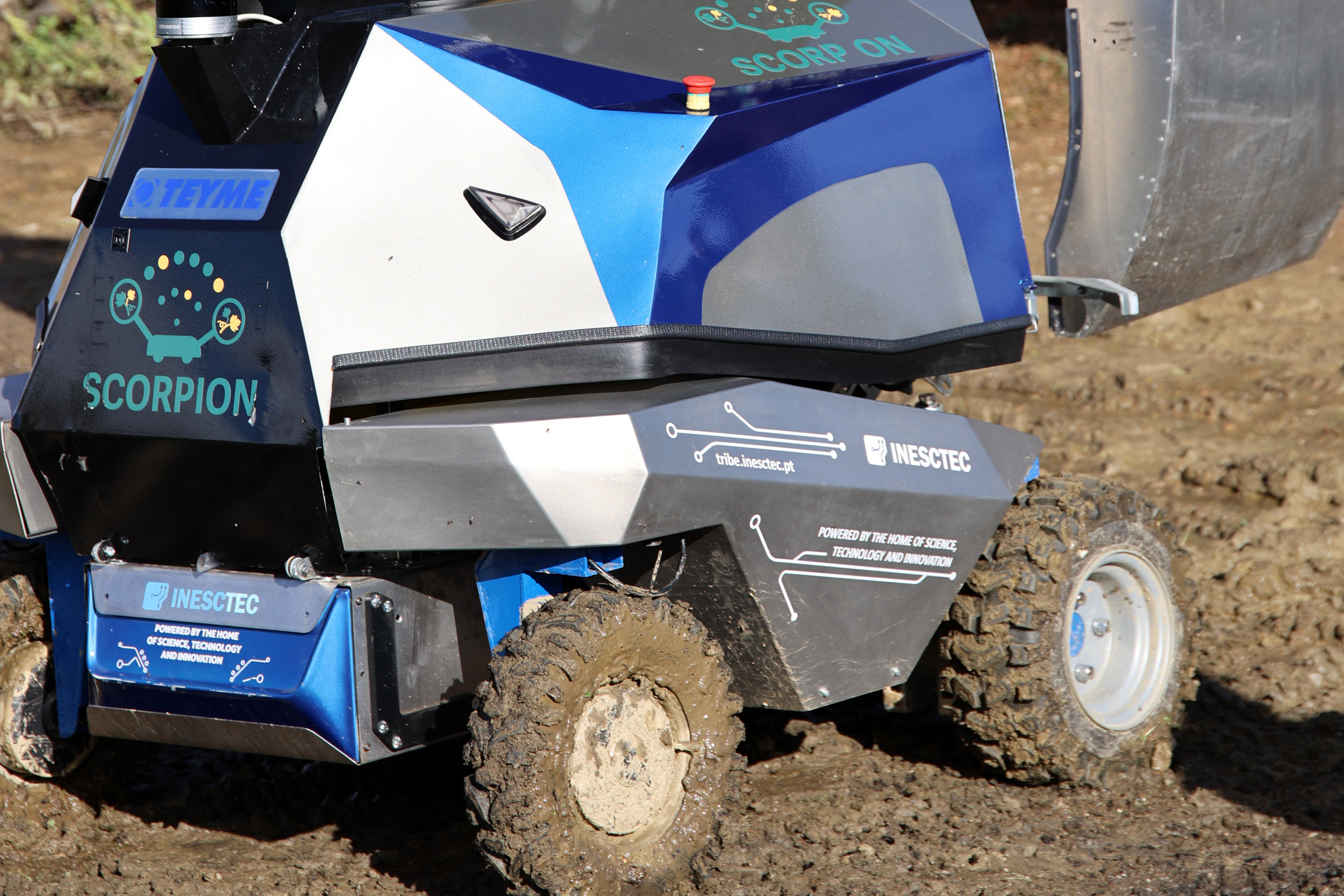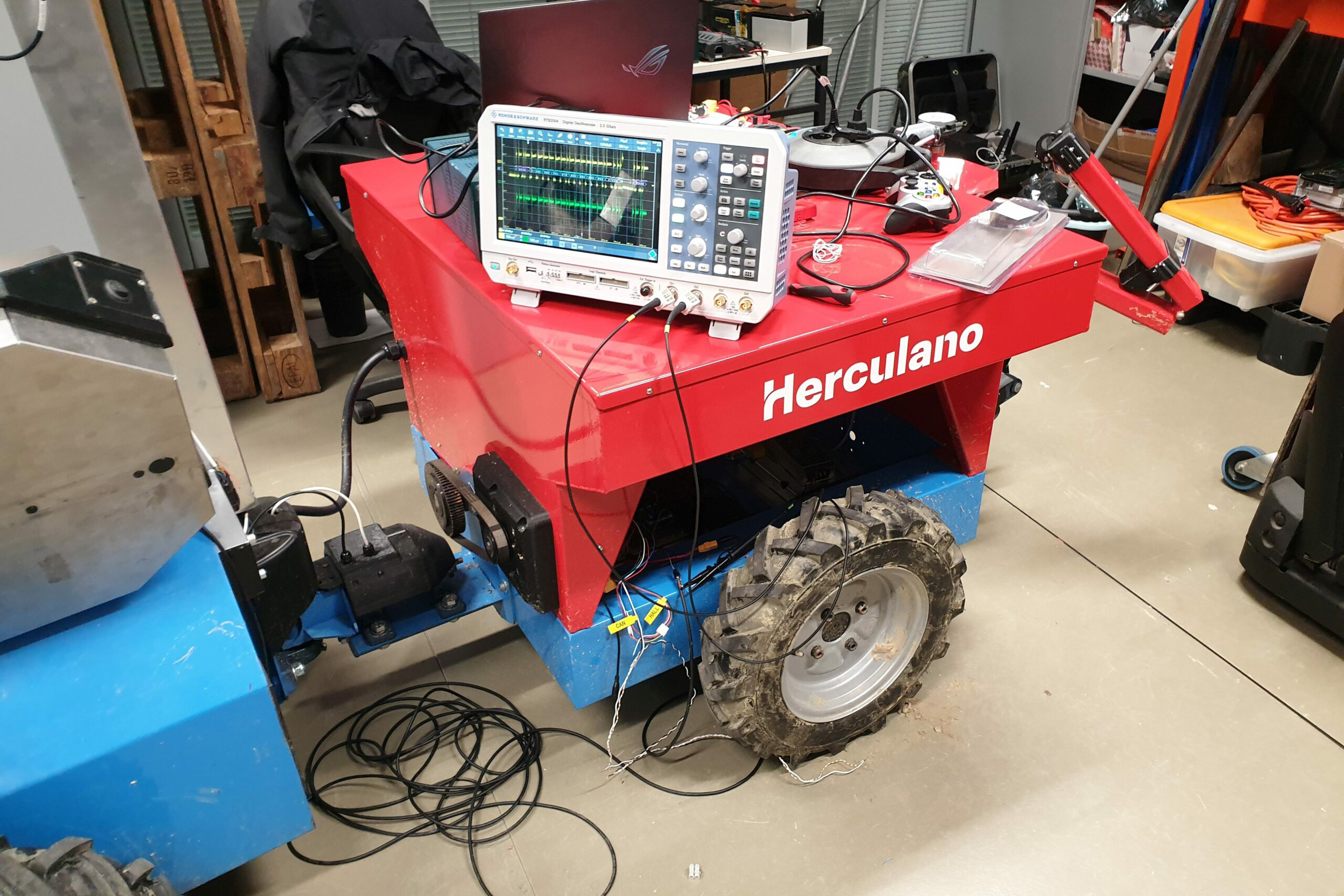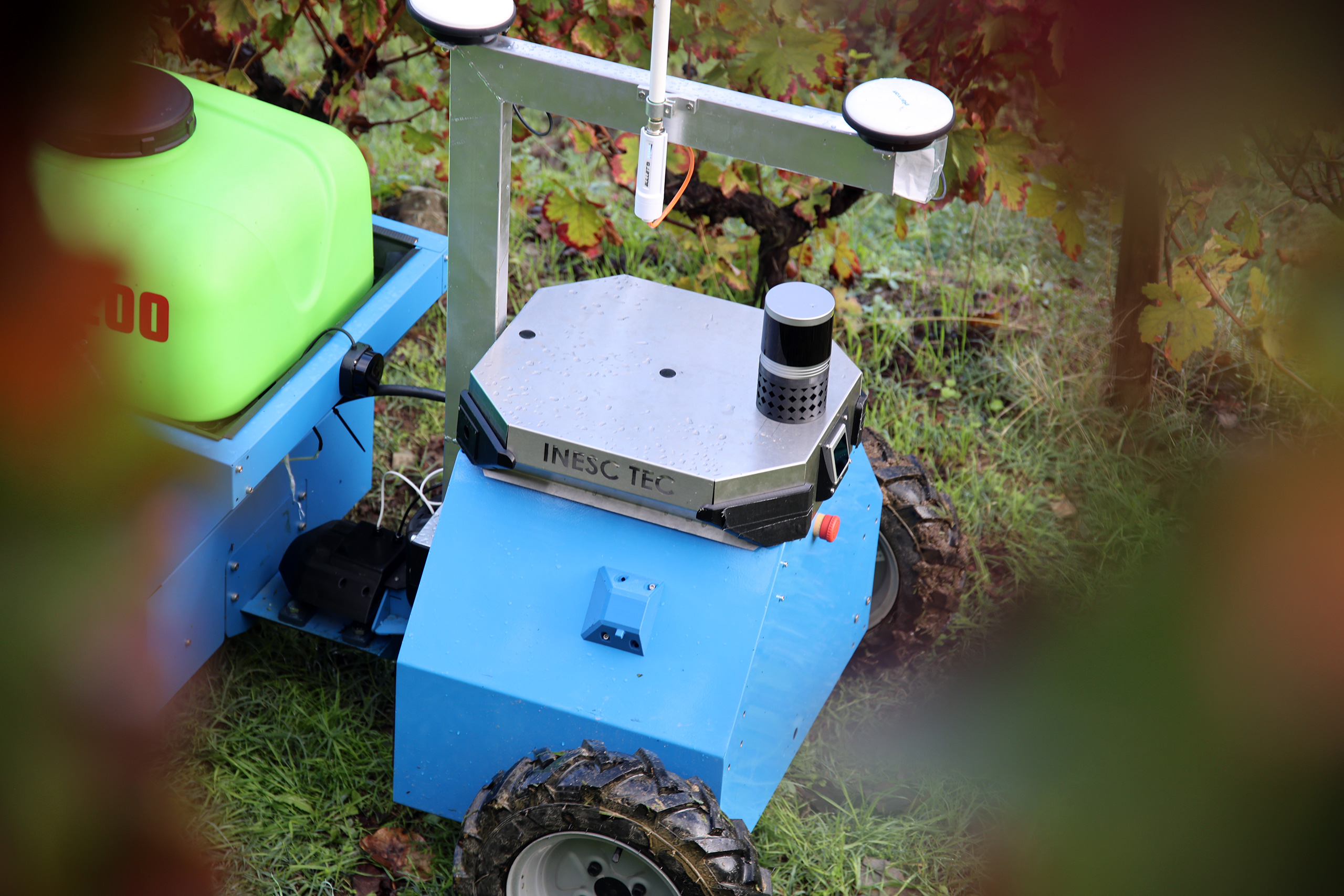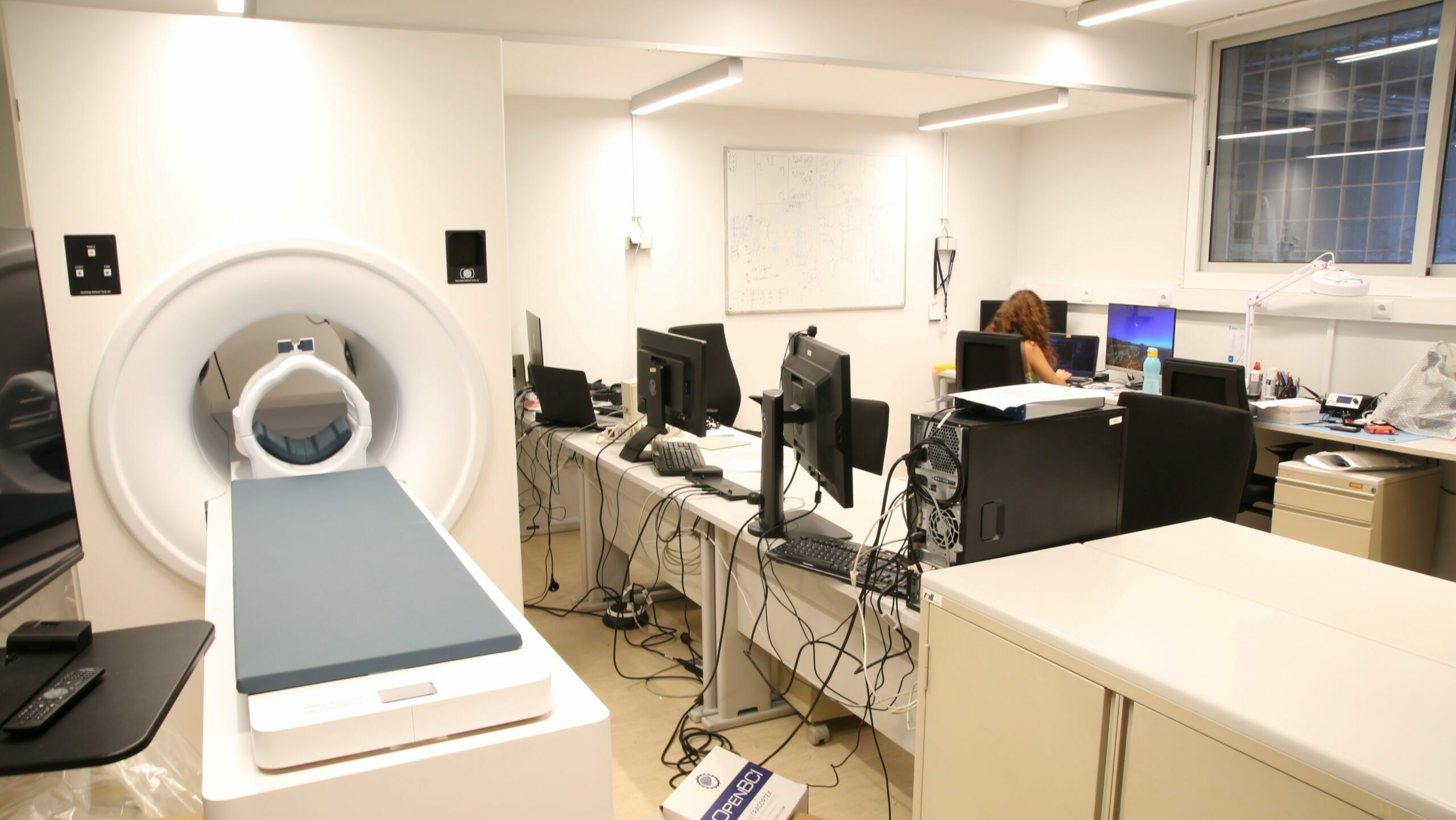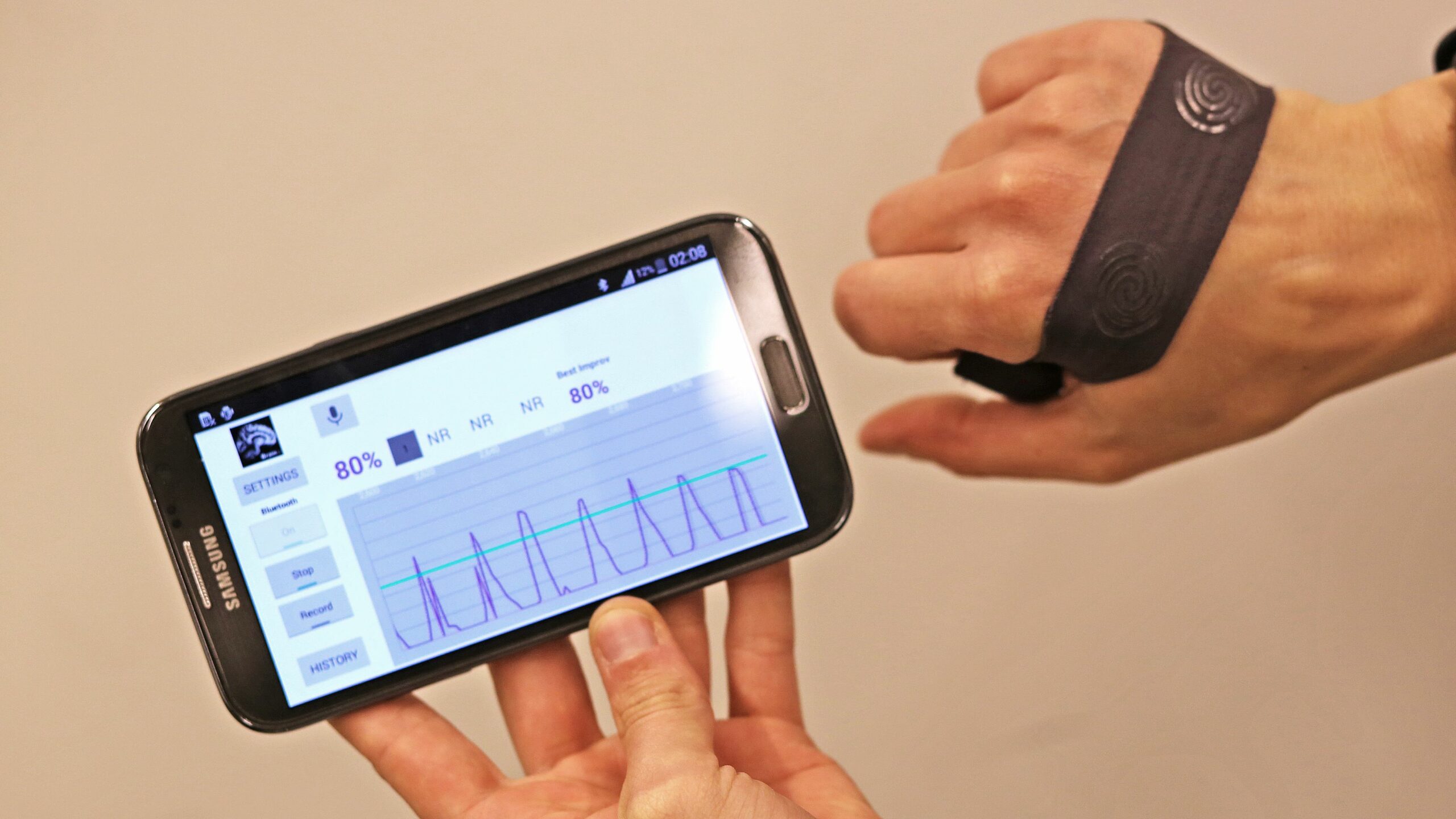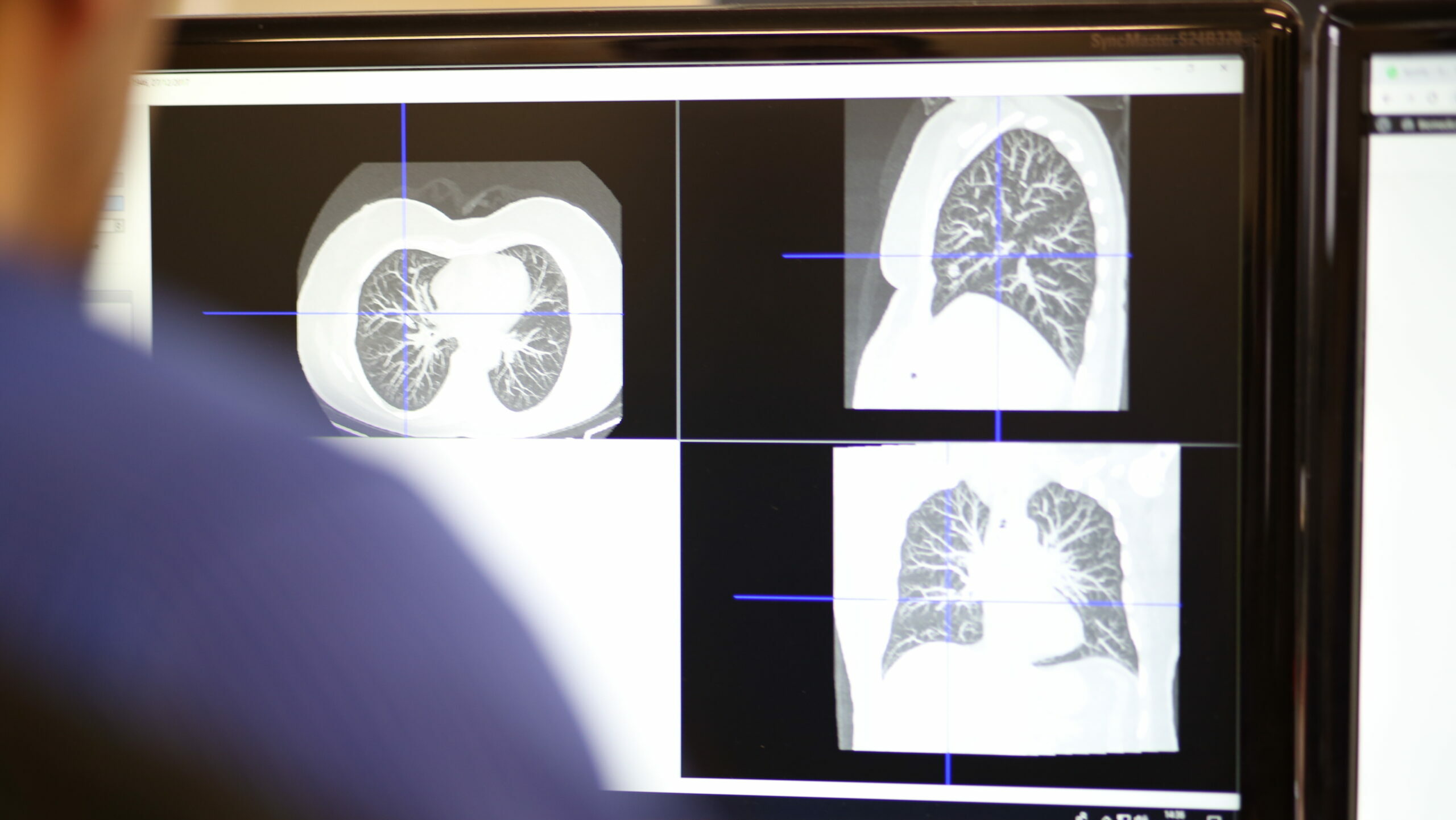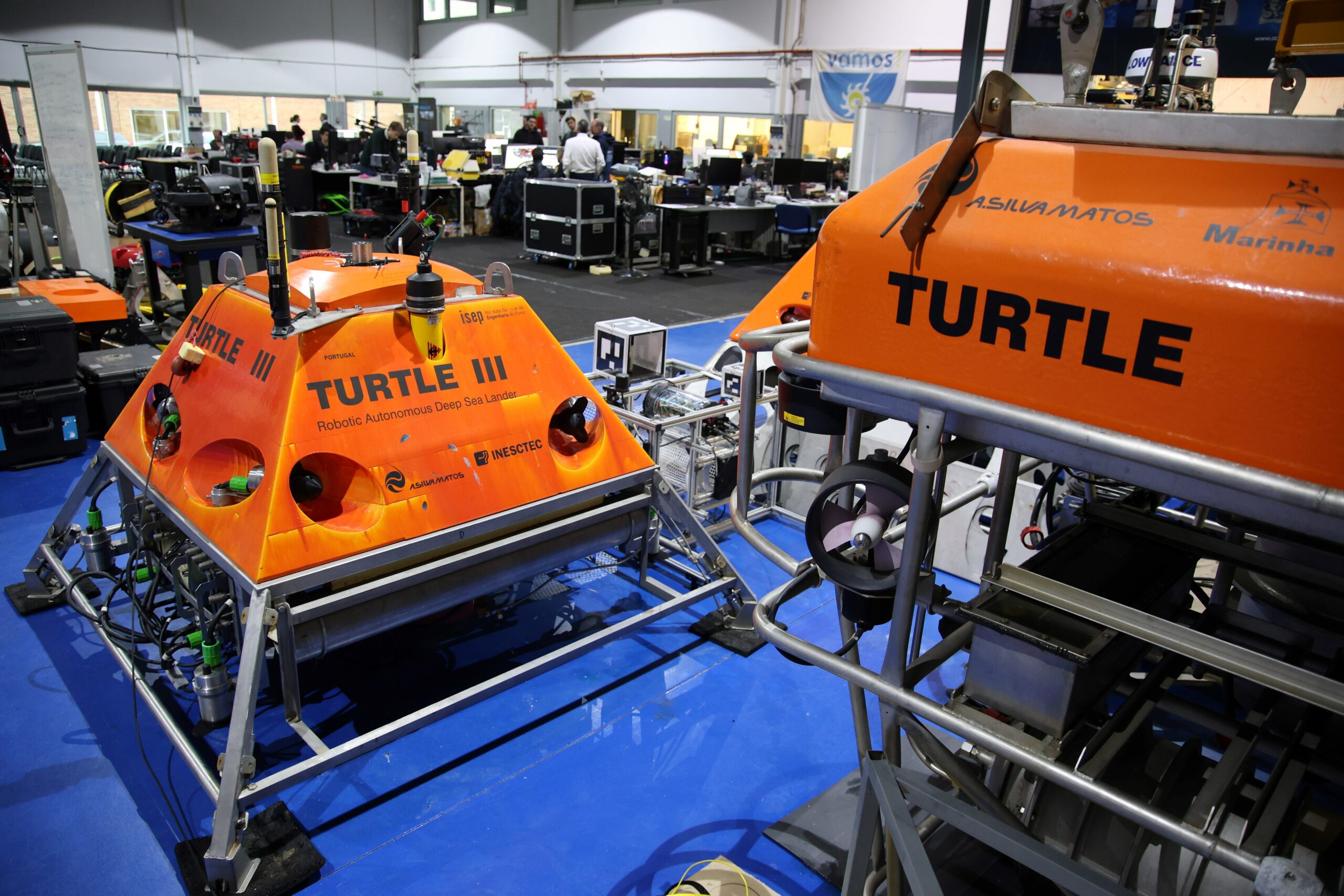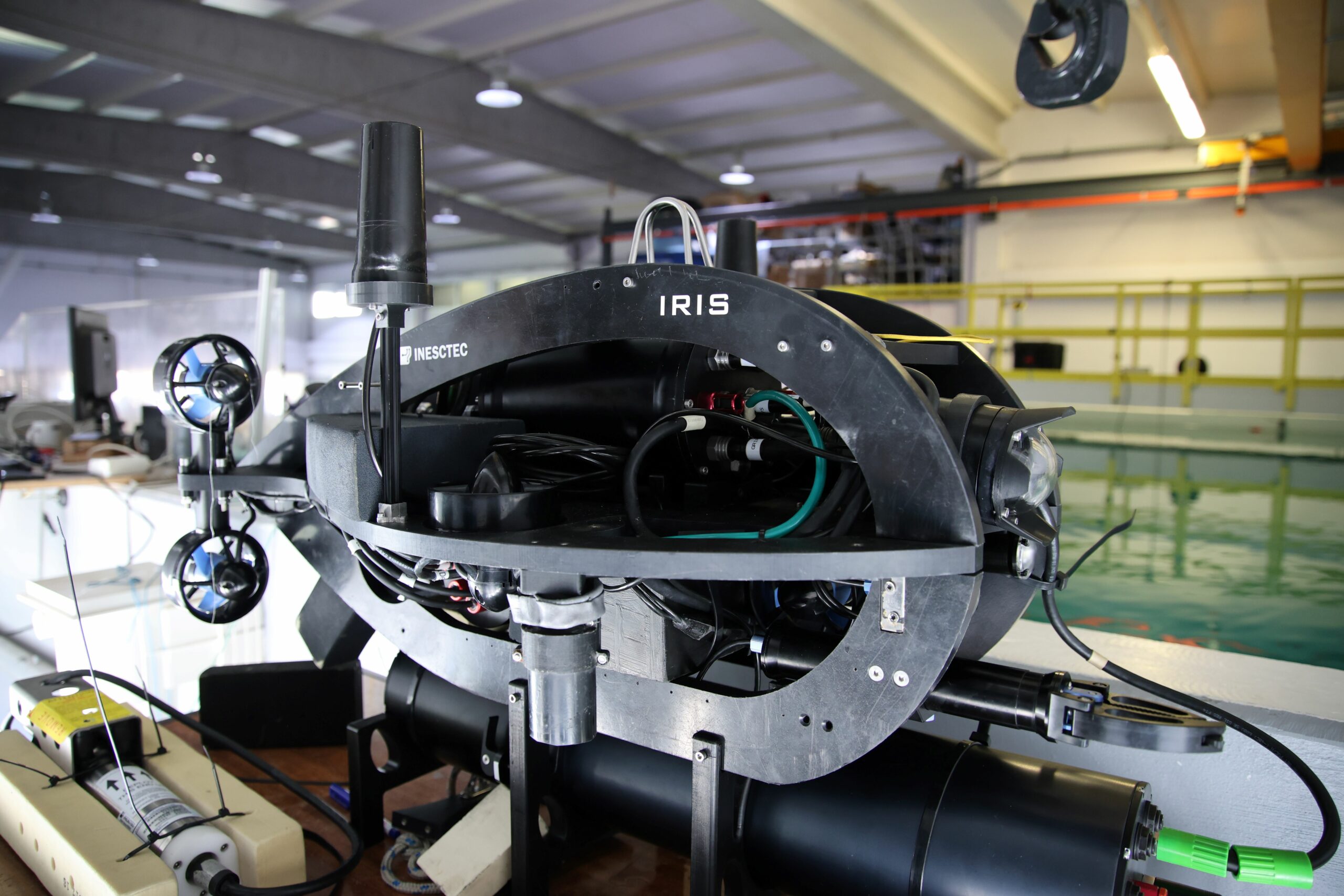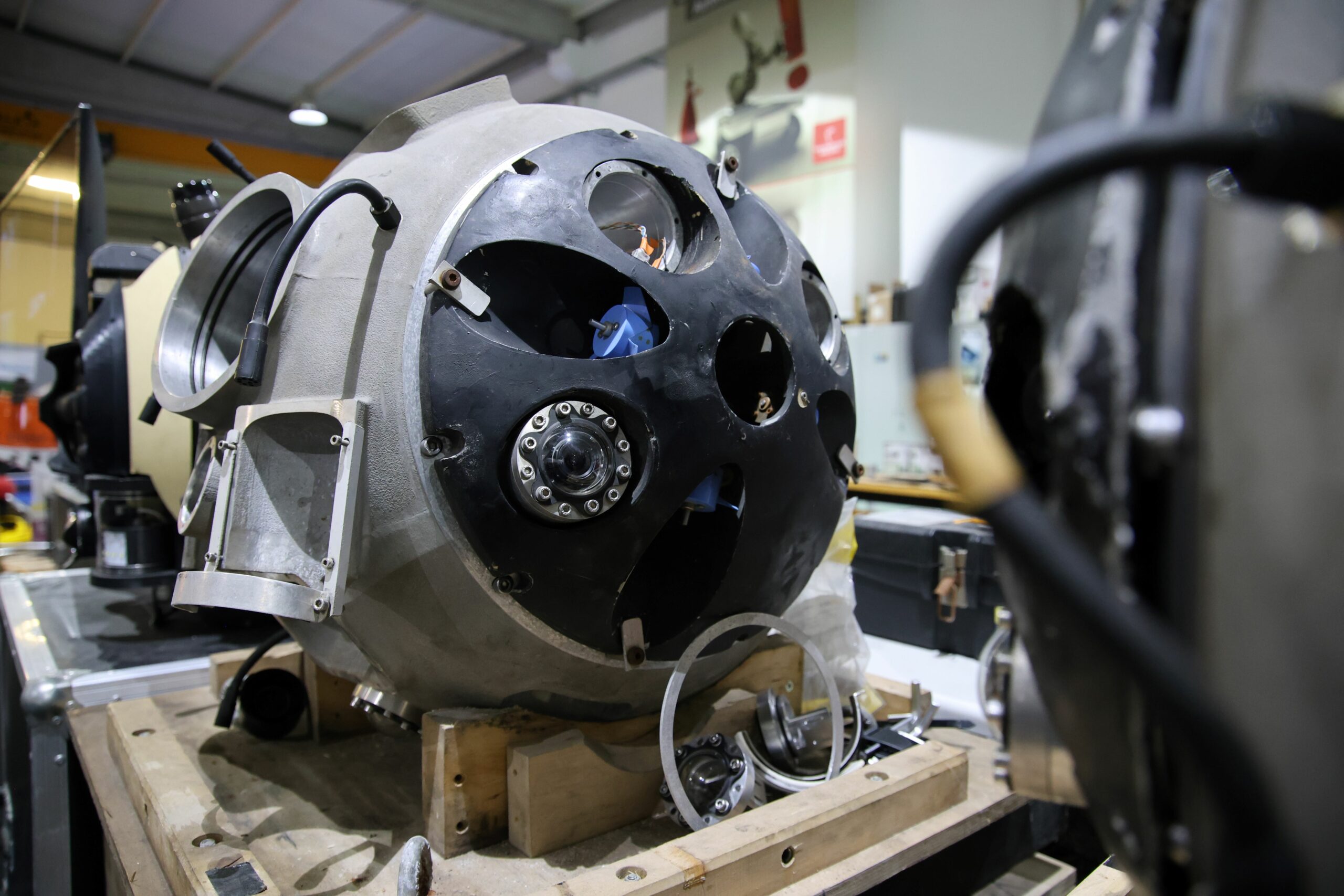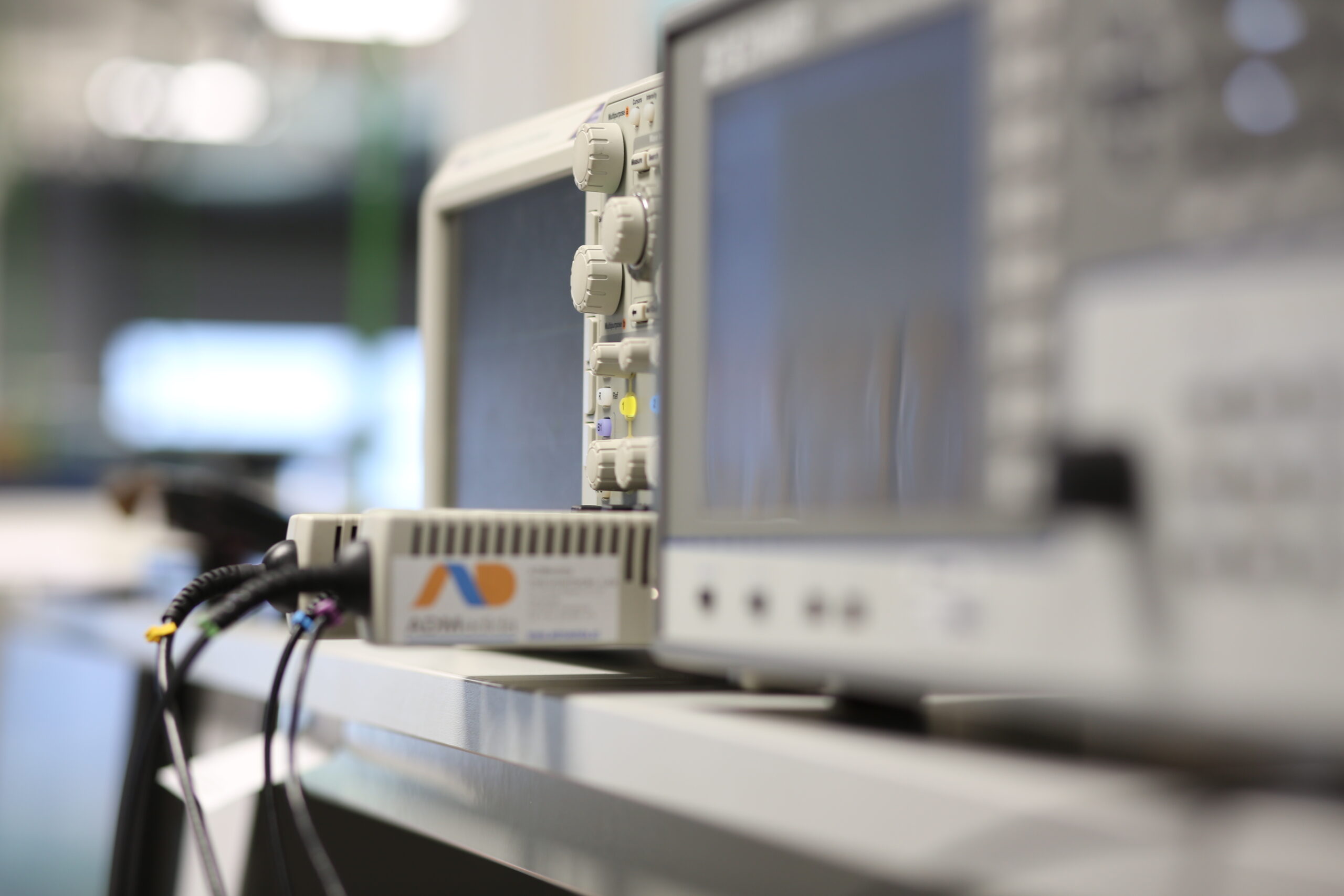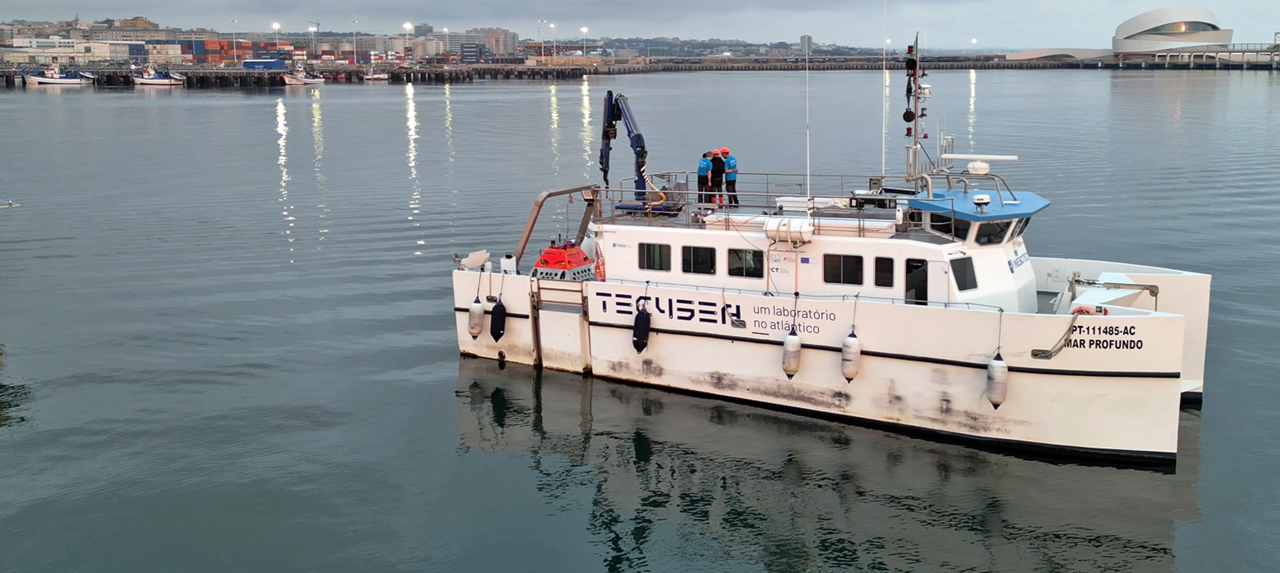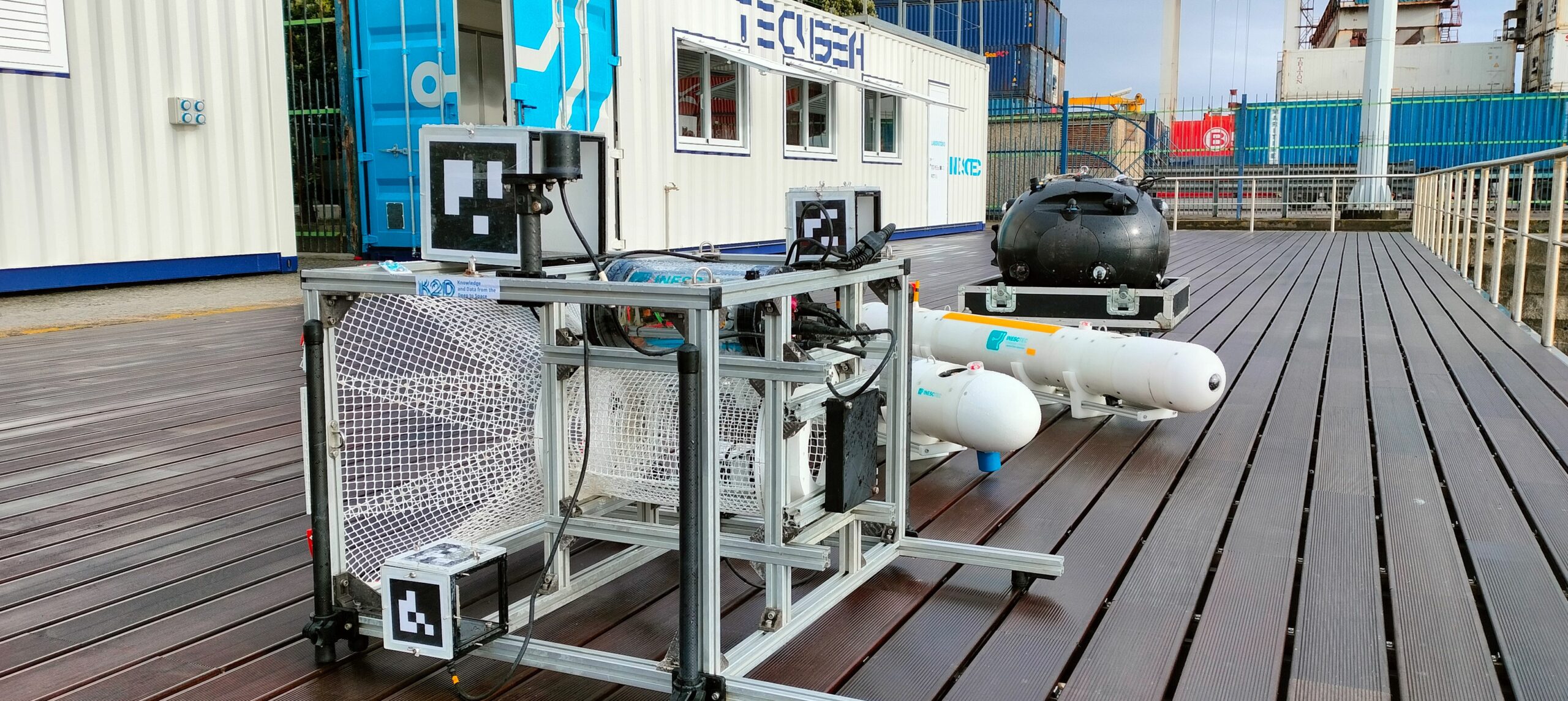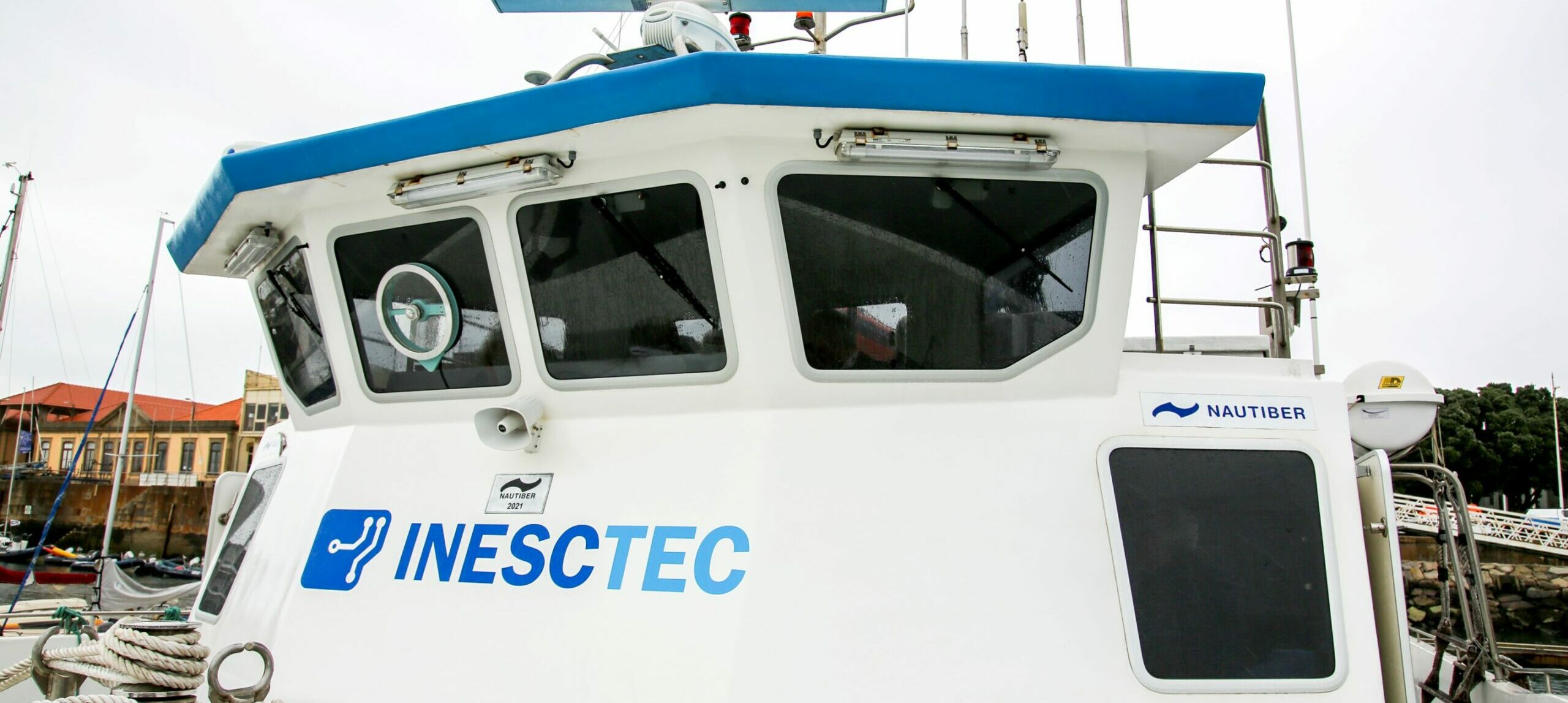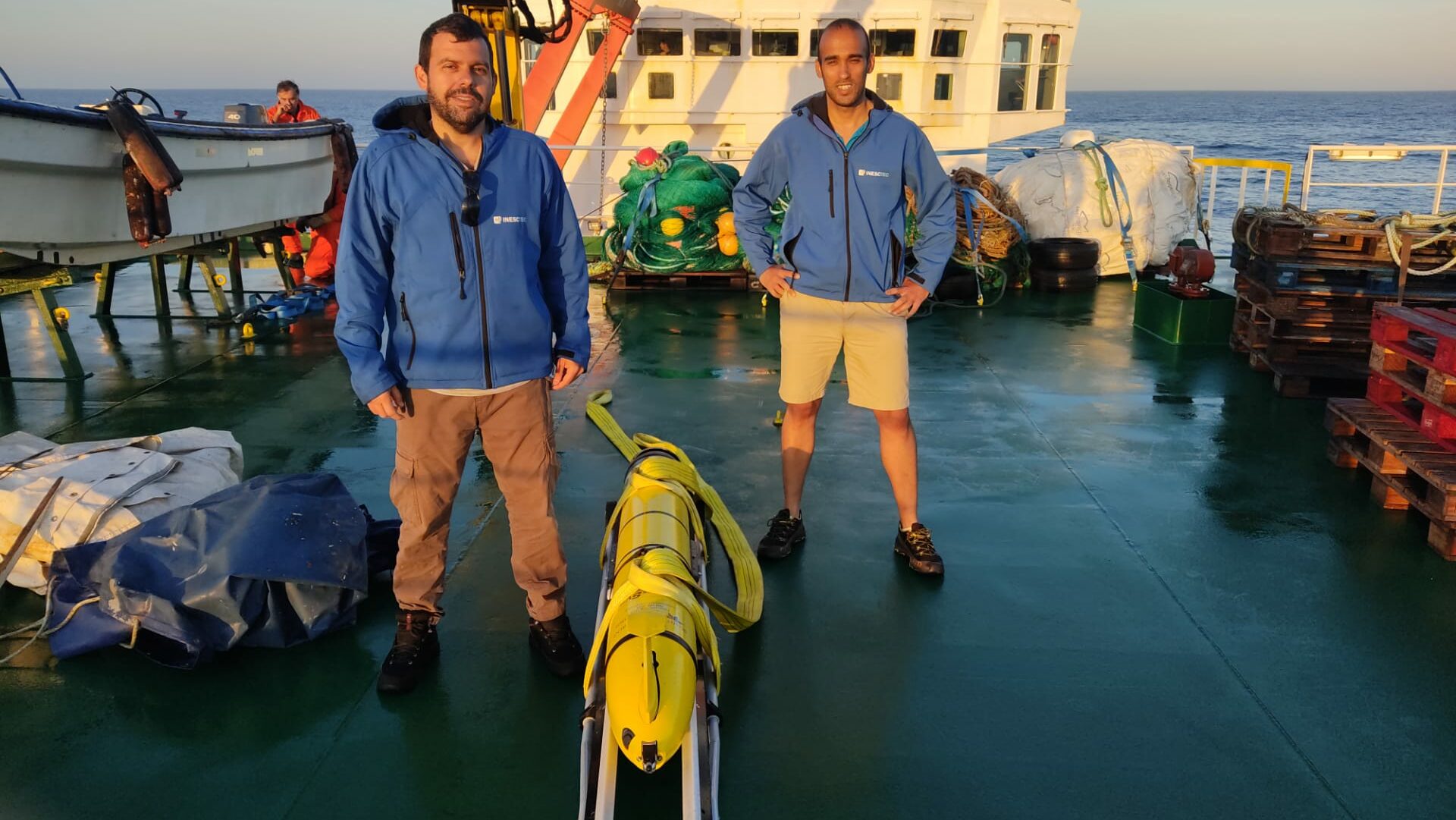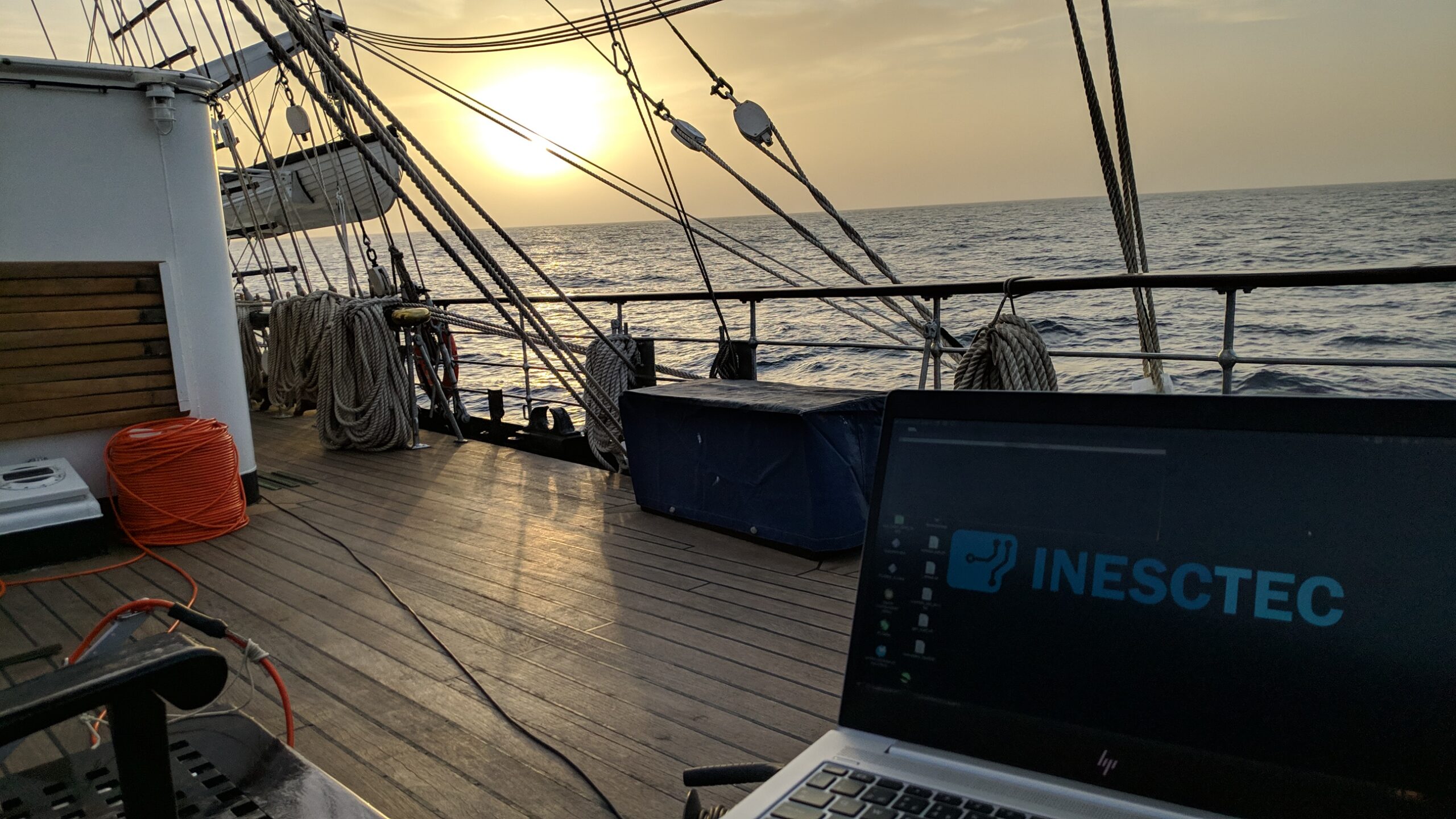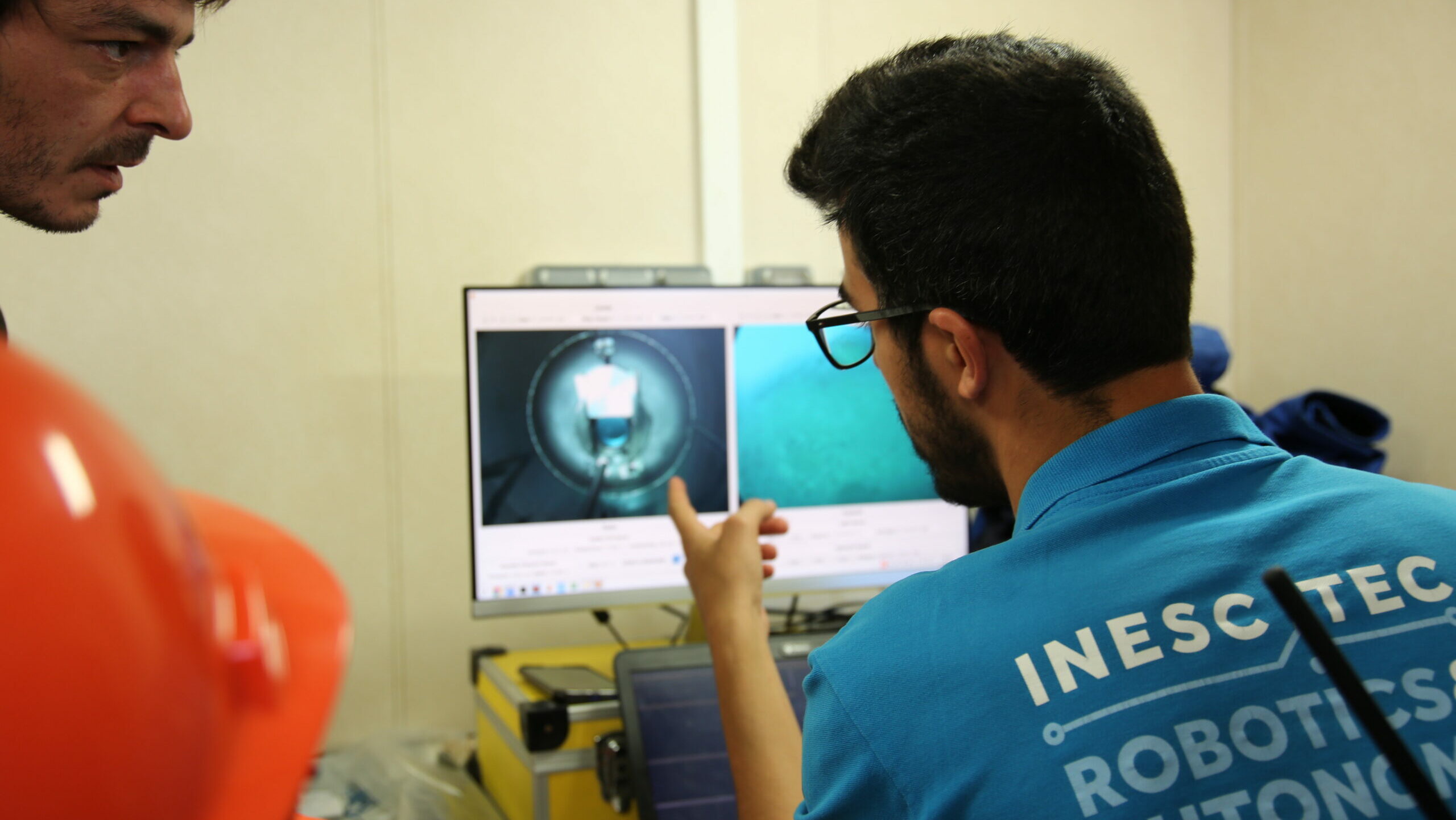Infrastructures
Enabling Science with Impact
Our research and development activities anchor in advanced research infrastructures. These facilities ensure several activities, ranging from excellence-driven academic research to market-driven innovation. We make the necessary investment so that our people can carry out their research.
Ana Pires – INESC TEC researcher – commandant of the first Portuguese analog mission (CAMões project), inside Gruta do Natal (Terceira Island, Azores). Photo: Marc Bluhm and Mara Leite. Know more here.
Besides playing a pivotal role in our mission across domains, such as bioengineering, communications, optics, power and energy, and robotics, our infrastructures demonstrate our commitment to providing the national research community with experimental means to carry out impactful science.
Also, they underpin innovative research – our infrastructures have been instrumental in developing technologies that address societal challenges – contribute to attracting national and international talent – critical for advancing scientific knowledge – and forge strategic partnerships with Portuguese and foreign entities.
Our advanced research infrastructures also support our teams as we conduct cutting-edge field experiments, many in remote and hostile environments, such as deep sea, flooded mines, arctic waters, or islanded electrical systems, requiring heavy and complex equipment.
Our Infrastructures
CLOUDinha Laboratory
Supporting the sharing of scientific knowledge and promoting its transfer to both the scientific community and the broader society.
The CLOUDinha laboratory provides computational support to research and development activities of INESC TEC and University of Minho, providing bare metal, virtualization, and security features such as trusted hardware.
The cluster is composed of different generations of hardware namely, Haswell, Kaby Lake, Comet Lake, Coffee Lake and Raptor Lake. It is currently composed of 106 micro-ATX machines based on commodity hardware with Intel Core i3,i5, and i9 CPUs, 8GB, 16 GB, and 64GB of memory, and heterogeneous storage hardware including HDDs, SSDs, and NVMe devices. The machines are connected through either a 1 Gb or 10 Gb network.
In addition to these, the cluster has four rack servers based on Intel Xeon hardware, with 32GB, 64GB, 192GB of memory, and heterogeneous storage hardware including SSDs, NVMe, and persistent memory devices. They are connected through either a 1 Gb or 10 Gb network, while some of them also have programmable network capabilities (DPDK). The heterogeneous hardware nature of the cluster is important for supporting different research projects that may require specific hardware features (e.g., different storage or network technologies, access to trusted hardware capabilities).Location: in Braga, at INESC TEC site placed in Universidade do Minho
Responsible researcher: Ricardo GonçalvesCommunications Laboratory (CommsLab)
Serving as an infrastructure for communications research, bridging simulations and experimentation.
The Communications Laboratory (CommsLab) was established in 2006 at INESC TEC’s main building, following a successful proposal to FCT under the National Program for Scientific Hardware Renewal. Established to push the boundaries of communications and sensing technologies, ComLab is a well-equipped infrastructure that includes optical, electronic, and RF communications test equipment, an anechoic chamber for precise antenna characterization and a state-of-the-art Low Earth Orbit (LEO) Satellite communications gateway. It supports a broad spectrum of research from satellite communications, 5G and 6G technologies to human sensing, fostering collaboration with academic and industrial partners. ComLab is also dedicated to training the next generation of researchers and engineers, offering them invaluable hands-on experience with cutting-edge technology. This makes ComLab not just a laboratory but a thriving community at the forefront of telecommunications research and development, committed to driving scientific breakthroughs and technological innovations that address the challenges of today and tomorrow. The main objective of the ComLab is to support the experimental evaluation and testing of next generation communications and sensing solutions in a controlled environment, enabling the validation of simulation results and preparation for subsequent testing in real-world scenarios.
Location: INESC TEC headquarters
Responsible researcher: Luís PessoaComputer Graphics and Virtual Environments Lab (CG&VE)
Focusing on the development of interactive technologies for authoring and collaborating in immersive environments.
The mission of the Computer Graphics and Virtual Environments Laboratory (CG&VE) is to research in the field of Computer Graphics and Human-Computer Interaction, with particular emphasis on Immersive Environments. From the fundamental research of technologies and algorithms to support digital mediation in virtual environments, to user-centric authoring tools, the laboratory has developed several innovative computational tools, also keeping the focus on the study of human perception and augmentation, with a view to improving the processes associated with the application areas of Industry 5.0, Health, Tourism, Culture and Education.
The laboratory intends to be a reference in the field of multisensory virtual reality, perceptual equivalence, human performance, and technology, creating innovative solutions in a wide set of areas of application, within the following research lines:
- Studies in human augmentation for enhanced performance in professional and personal activities.
- Multisensory virtual environments to provide enhanced presence and immersion.
- Immersive learning environments and authoring tools to enhance training and education.
- Serious Games and Gamification to promote increased motivation and efficacy in immersive learning, cultural heritage, and behaviour change.
- Immersive 360º video tools to improve communication.
- Extended reality frameworks to deploy the most cost-effective solutions.
- 3D multimodal interaction in immersive environments, including haptics and pseudo-haptics.
Location: INESC TEC site located at the Faculty of Engineering, University of Porto
Responsible researcher: Rui RodriguesIndustry and Innovation Lab (iiLAB)
Disclosing the state-of-the-art in advanced production technologies through the demonstration of research, experimentation, and advanced training results.
iiLab supports technology-based innovation in public and private organisations, thus contributing to the development of skills in the development, adoption, and implementation of advanced production technologies, leading to a sustainable competitiveness in the circular economy context.
The equipment in the laboratory is very diverse, from storage sytems like a Vertical Lift Module (VLM) and a warehouse for pallets, passing through systems and equipment typically present on a production line such as conveyor belts, CNC machines, flexible manufacturing lines based on mobile robots, workstations with collaborative robots. The line ends with inspection and packaging systems based on robotic manipulators and artificial vision equipment (RGB, RGV-D, multispectral camera, …).
There are also auxiliary systems such as equipment for virtual and augmented reality, programming by demonstration of manipulators, and equipment for high-precision acquisition of the position and speed of moving parts (Optitrack) or 3D measurement of objects.
All the equipment is integrated into a computer network with IoT capabilities. The laboratory also has available a 5G network.
This infrastructure allows:
- Demonstration of concepts and advanced technologies in the areas of robotics, automation, industrial cyber-physical systems (Internet of things) in the form of a showroom.
- Dissemination of INESC TEC’s expertise for the industry and the community in general.
- Experimentation and prototyping space for technological companies.
- Tailor-made training for senior managers and senior executives of industrial companies.
This lab main activities are the demonstration of concepts and advanced technologies in the areas of robotics, automation, and industrial cyber-physical systems, the experimentation and prototyping space for technological companies, and tailor-made training for senior managers and senior executives of industrial companies.Location: INESC TEC site placed in PORTIC
Responsible researcher: António Paulo MoreiraLaboratory of Microfabrication and photonics
Modifying materials using femtosecond laser exposure due to non-linear absorption – a high versatile technique which excels in 3D fabrication with high resolution.
The Microfabrication Laboratory explores non-traditional microfabrication techniques based on the femtosecond laser direct writing capabilities, to support mainly the activities on integrated optics and optofluidics, but also other areas of research. It can produce microchips, to implement biosensors and micro and nanostructures, as well as first order Bragg gratings and long period gratings, made by point-by-point laser direct writing, to implement better and more reliable sensing heads. Laser marking and surface treatment is also possible. A second femtosecond laser fabrication set-up dedicated to Bragg and long period gratings fabrication machine is currently undergoing a refurbishment in terms of positioning stages and beam conditioning. This major upgrade will permit to address fabrication in multicore fibers and use the cladding of standard fibers as a substrate.
This facility is complemented with an ISO 6/7 cleanroom where standard 2D micro/nanofabrication techniques can be used. The cleanroom is managed by CEMUP MNTEC (University of Porto), that made its micro/nanofabrication equipment available in this infrastructure for widespread use.Location: INESC TEC site located in Faculty of Sciences, University of Porto
Responsible researcher: Paulo MarquesLaboratory of Robotics and Internet-of-Things for Smart Precision Agriculture and Forestry (TRIBE LAB)
Driving real-world impact by contributing to projects that advance agriculture and forestry, boosting profitability, sustainability, and automation.
INESC TEC TRIBE LAB was conceptualised in 2013 with a clear mission: to pioneer robotics, automation, and IoT-based solutions. The aim is to revolutionise smart precision agriculture and forestry, ensuring that operations are conducted at the “right time, right tool/product, right amount, right place” for optimal outcomes, focusing on enhancing profitability, sustainability, and automation across three primary environments: Permanent Crops, Forest biomass harvesting, and Protected Cultivation (Greenhouses and Controlled Environment Agriculture).
This facility hosts 27 PhD students and advanced researchers in a space of approximately 180 square meters. The lab is equipped with multiple GPU servers, several 3D printing machines, advanced soldering equipment, and a variety of electronic tools (e.g., oscilloscopes, signal generators). The facility includes six prototype agricultural robots featuring the latest sensing technologies (e.g., 3D LiDAR, RADAR, Stereo AI Cameras) and advanced actuators (6 DoF collaborative manipulators, advanced sprayers, and fertilizers). Additionally, the facility is complemented, nearby, by an outdoor phenotyping greenhouse covering 9 square meters, equipped with the latest sensors to facilitate realistic laboratory testing of R&D prototypes. All of these resources support the development and discussion of ideas, knowledge creation, prototype development, implementation, and testing, enabling cutting-edge research and development in agricultural robotics and IoT.
The lab’s research, development, and technology deployment activities are guided by a comprehensive ten-year roadmap (2020-2030), meticulously aligned with European agendas, FAO’s agricultural priorities, and the Innovation Area agenda of the TEC4AGRO-FOOD INESC TEC’s Initiative. By addressing societal challenges and leveraging cutting-edge innovation, its multi-disciplinary team strives to be at the forefront of transforming the agricultural landscape for a sustainable future. TRIBE LAB operates with dynamic flexibility, focused on research and developing cutting-edge physical prototypes, with the capability to quickly create prototypes on demand, ready to address emerging societal challenges.Location: in Porto, at INESC TEC site placed in FEUP
Responsible researcher: Filipe SantosNeuro-Engineering Laboratory (BRAIN Lab)
Researching new biomedical engineering methods for neurological diseases such as Parkinson’s, Alzheimer’s, Autism and Epilepsy.
The Neuro-Engineering Laboratory, a.k.a BRAIN Lab (Biomedical Research And INnovation) was established in 2014 at INESC TEC’s main building to provide multimodal brain imaging & signal methodological contributions to novel exploratory engineering approaches in neuroscience field, from neuron cell(micron&nano)-sized sensing to neuroimaging and computer vision based macro analysis.
BRAIN Lab operates an advanced Brain Imaging infrastructure (that offers scientific services to third-parties, apart from our own research project) with an f-MRI simulator (mock scanner) fully equipped with synchronized 64ch video-Electroencephalogram (EEG) medical system from Micromed, wearable EEG devices, video cameras, MRI compatible pads and audio/video system to simulate f-MRI experiences, and prepare stimulation protocols to be deployed in MRI scanners at the CHUSJ or any other clinical center. This infrastructure is used for fMRI and Video-EEG-fMRI paradigms development and testing for neuroscience projects with clinical partners. BRAIN Lab also has a strong partnership with Carnegie-Mellon University Robotics Institute (US) and with clinical partners (CHSUJ (PT) and LMU (DE)), with “living labs” such as epilepsy full 3Dvideo-EEG monitoring systems that captures 24/7 real seizures at their Epileptic Monitoring Units (EMUs) jointly hosting the largest database of such multimedia data in the world.
Furthermore, this lab operates a full-stack hardware development workbench (e.g. PCB design, sensors and chips soldering station etc.) and embedded device developing platform with special focus on wearable devices, including our textile-embedding electronics technology.Location: INESC TEC headquarters
Responsible researcher: Duarte DiasRobotics and Autonomous Systems Laboratory (RAS)
Researching of excellence in Autonomous Systems, enabling the observation and operations in complex, unstructured and harsh environments.
The Robotics and Autonomous Systems Laboratory (RAS) supports R&D activities, technical training of human resources, as well as advanced education programs. The multiple-purpose robotic operations include data gathering, inspection, mapping, surveillance, and/or intervention. The impact in the economic and social fabric development is also part of the objectives – by contributing to the performance, competitiveness and internationalization of Portuguese companies and institutions.
The facilities include two test tanks, the larger one has dimensions 10mx6m and is 5m deep, and a workshop for prototyping. The laboratory infrastructure comprehends a large set of robotics platforms (underwater, surface, aerial, and terrestrial), most of them ready to operate in real environments. It also includes many sensors and auxiliary equipment that can be operated independently or integrated into larger systems.Location: in Porto, at INESC TEC sites placed in ISEP and in FEUP
Responsible researcher: José Miguel AlmeidaSmart Grids and Electric Vehicle Laboratory (X-Energy Lab)
Providing a set of experimental laboratorial-scale testbeds that support applied research activities in different areas of power and energy systems domain.
The x-energy lab is a multifunctional and multipurpose electric and digital infrastructure that offers a distinctive integrated capacity to simulate, prototype and test solutions for the energy system of the future, providing support and services to the scientific and industrial ecosystem. X-energy lab is an important research infrastructure providing testing and validation capabilities to the research activities carried out within Power and Energy Systems scientific and innovation developments.
Recognised by the Portuguese Foundation for Science and Technology (FCT), as part of the National Roadmap for Research Infrastructures of Strategic Interest, the x-energy lab is a modern infrastructure with the ability to cover state-of-the-art and beyond state-of-the-art prototype solutions. X-energy is well-positioned to integrate the different research and innovation networks and to provide newer and updated services to business and industrial partners to generate applied results. This involves providing means to support research activity regarding experimental demonstration capabilities targeting several TRL, as well as services to the scientific, educational, business and industrial community. X-energy can serve not only INESC TEC researchers but also temporarily I&D researchers external to the infrastructure (national and international), whilst ensuring financial stability from newer sources and revenue opportunities.Location: INESC TEC headquarters
Responsible researcher: Justino RodriguesTEChnology for Sea infrastructure (TEC4Sea)
Supporting multidisciplinary research, development, and testing of marine robotics, telecommunications, and sensing technologies for operation in oceanic environments.
The TEChnology for Sea infrastructure (TEC4SEA) is a comprehensive marine research facility with vessels, crucial for advanced marine systems studies. It is open to both the R&D community and the industrial sector, thus providing the equipment, expertise, and logistics needed to support those communities in developing, evaluating, and validating technological solutions designed for maritime environments, whilst fostering, and advancing the blue economy. TEC4SEA intends to contribute to the developing of technology for maritime environments, by making available facilities, resources, and know-how to economic agents and researchers.
TEC4SEA is a vertically integrated infrastructure; its expertise and resources range from pure conceptual research to field deployment missions, with strong industrial and logistic competences in prototype production and an eclectic set of laboratories, testbeds, equipment, and support facilities for experiments in controlled and real environments. It can thus support researchers in all phases of technology development, from conception and theoretical analysis to prototype development, field deployment, and technology validation.Location: in Porto, at INESC TEC site placed in Porto de Leixões (Leça da Palmeira)
Responsible researcher: Paulo MónicaThe European Multidisciplinary Seafloor Observatory – Portugal (EMSO-PT )
EMSO-PT is a research infrastructure led by IPMA (Instituto Português do Mar e da Atmosfera) and involving 15 other research institutions working on ocean science or technology, including INESC TEC.
The goal of EMSO-PT is to organise the Portuguese contribution to the EMSO-ERIC network, a large-scale European Research Infrastructure, networking fixed deep sea multidisciplinary observatories, with the scientific objective of real-time, long-term monitoring of environmental processes related to the interaction between the geosphere, biosphere, and hydrosphere. It is a geographically distributed infrastructure at key sites in European waters, spanning the Arctic, the Atlantic, and the Mediterranean, up to the Black Sea. It will be in place by the end of the decade.
The Portuguese participation in EMSO has been focused on the Azores and Cadiz nodes, in cooperation with France and Italy. These observatories will merge “off-the-shelf” technology, which will ensure that they will meet the international standards, with novel approaches (based on networked, autonomous observation platforms), that will contribute to more sustainable monitoring operations and create the basis for the development of new marine products and services, creating value and qualified jobs.
INESC TEC involvement in EMSO-PT addresses the establishment of long-term non-fixed observatories, and such work is organised along two complementary lines: relocatable nodes and long-endurance mobile platforms.Location: North Atlantic
Responsible researcher: José Miguel Almeida
